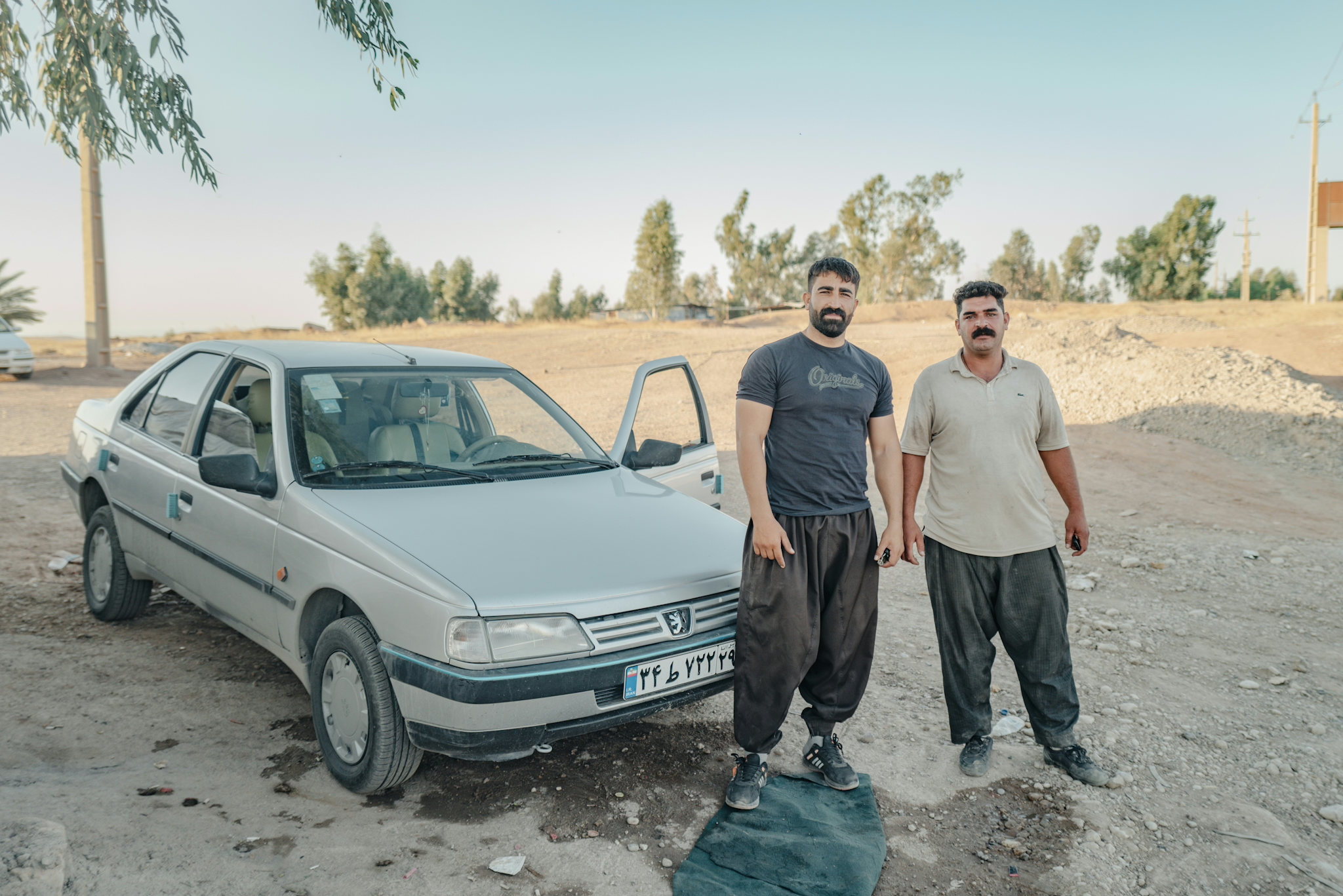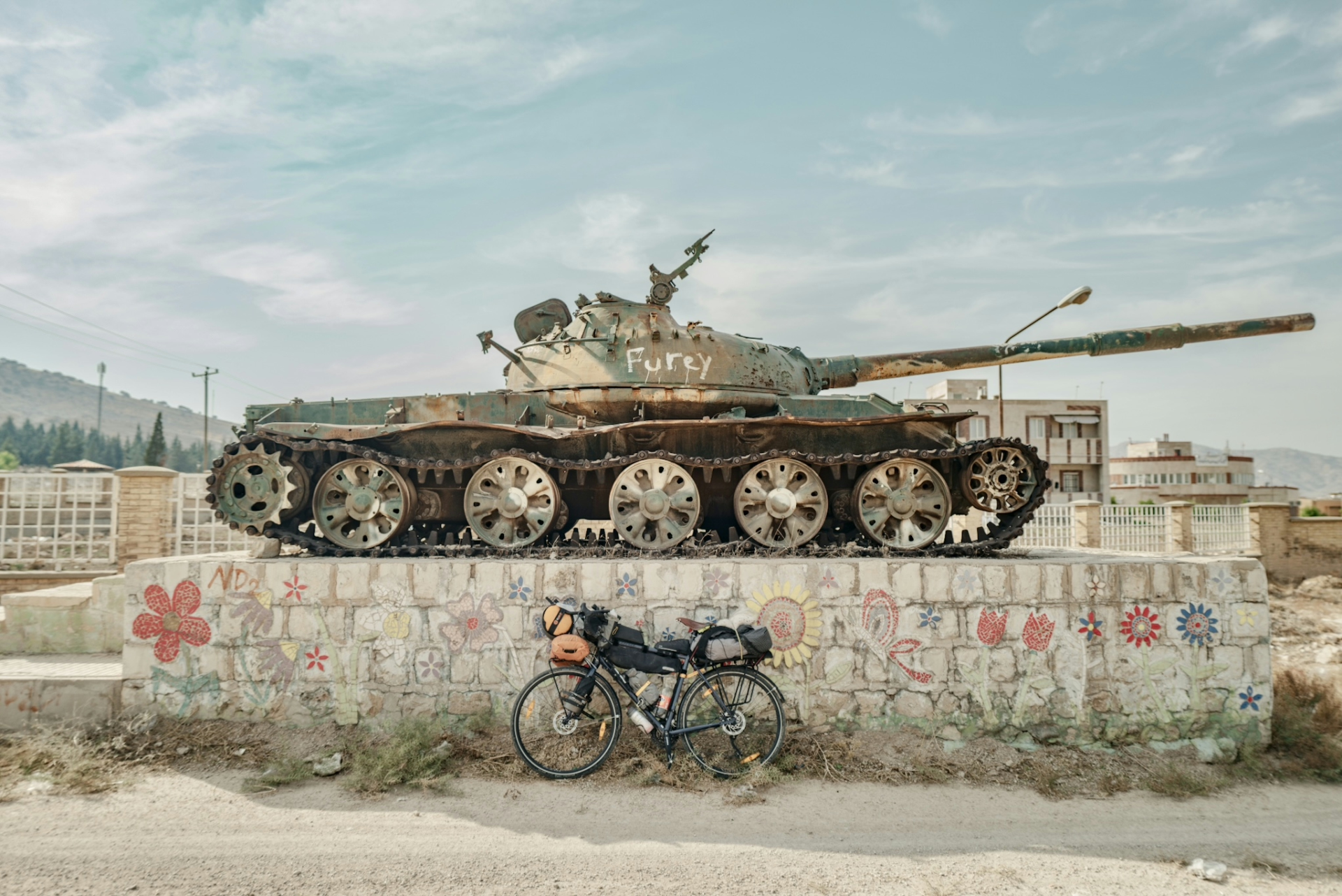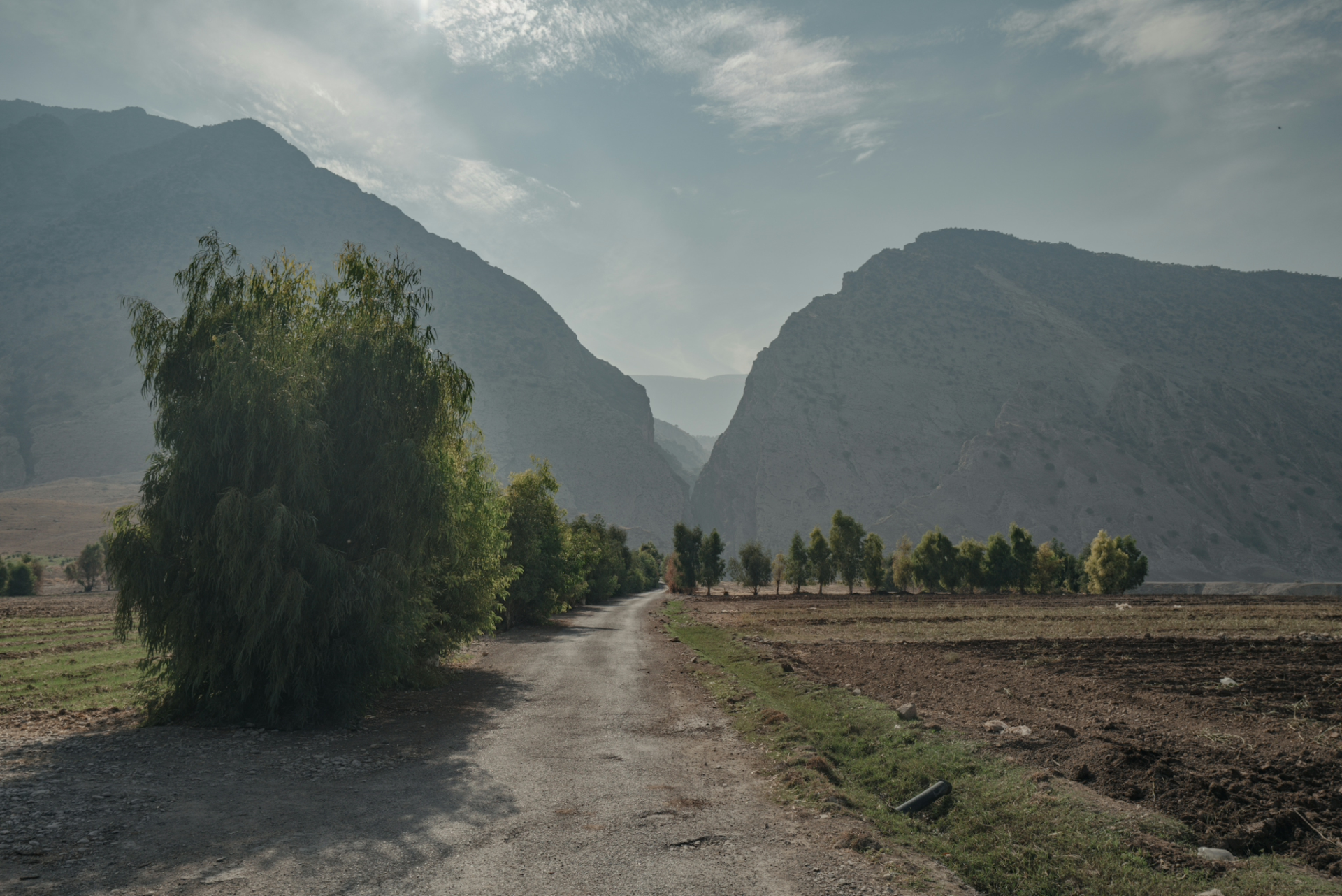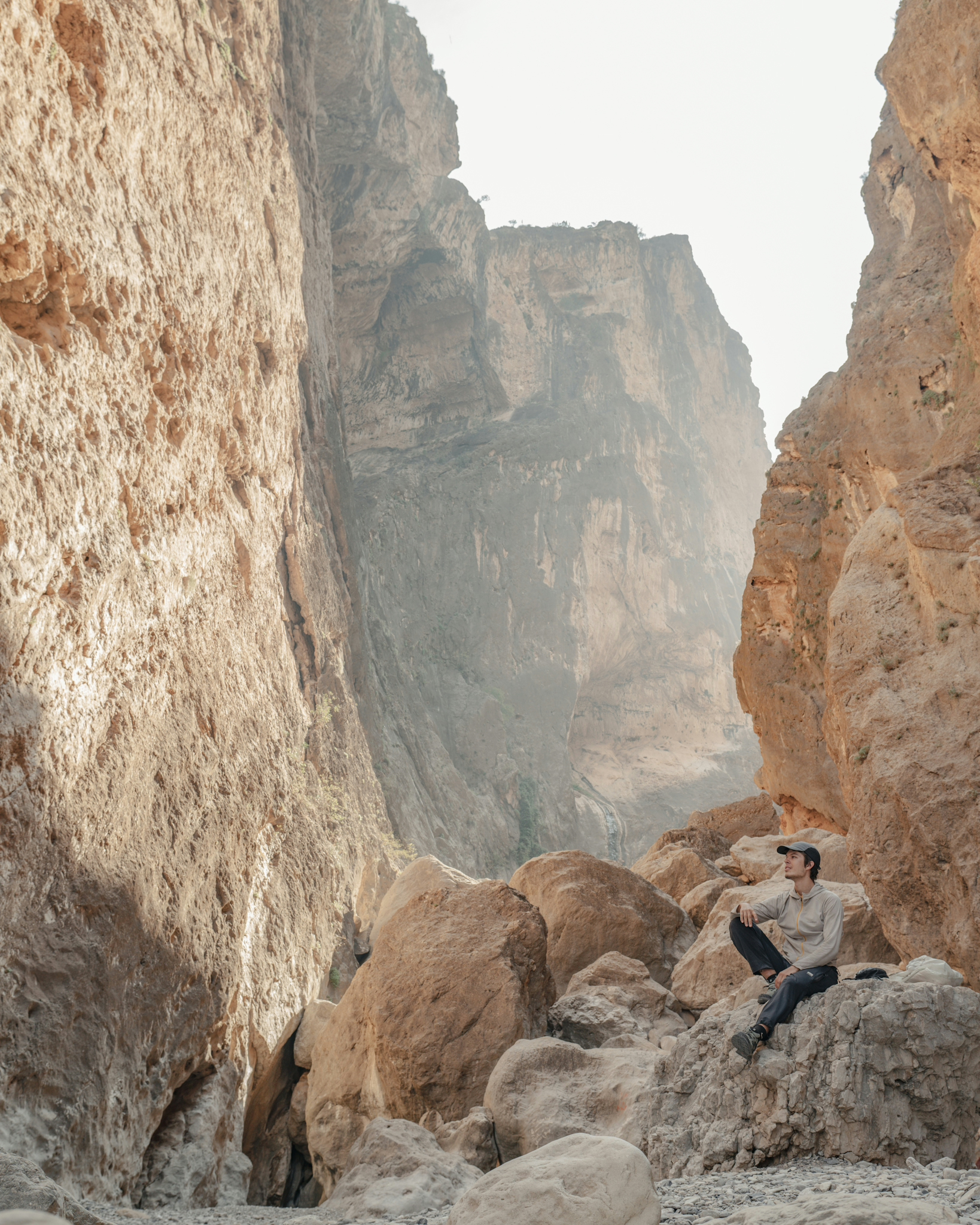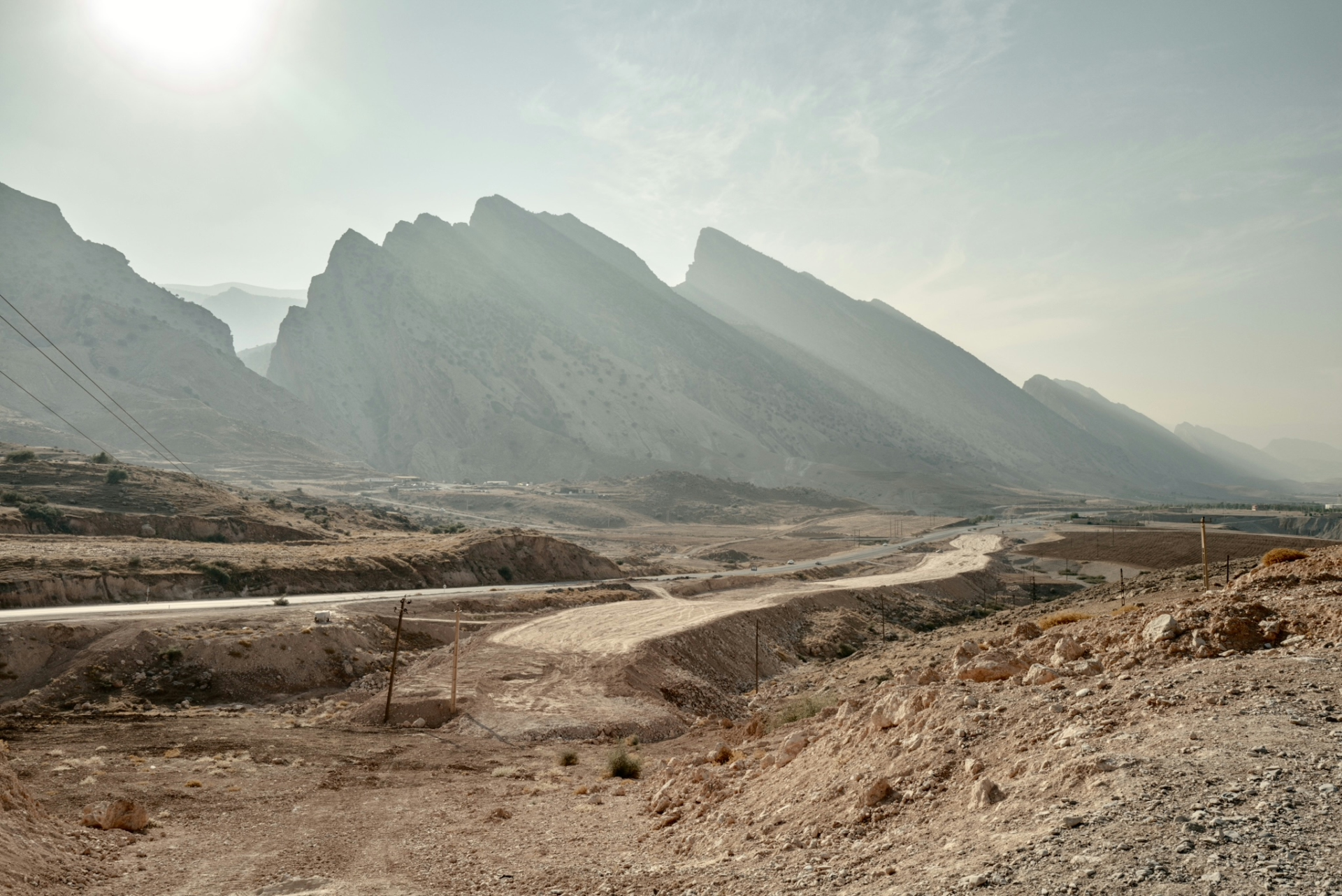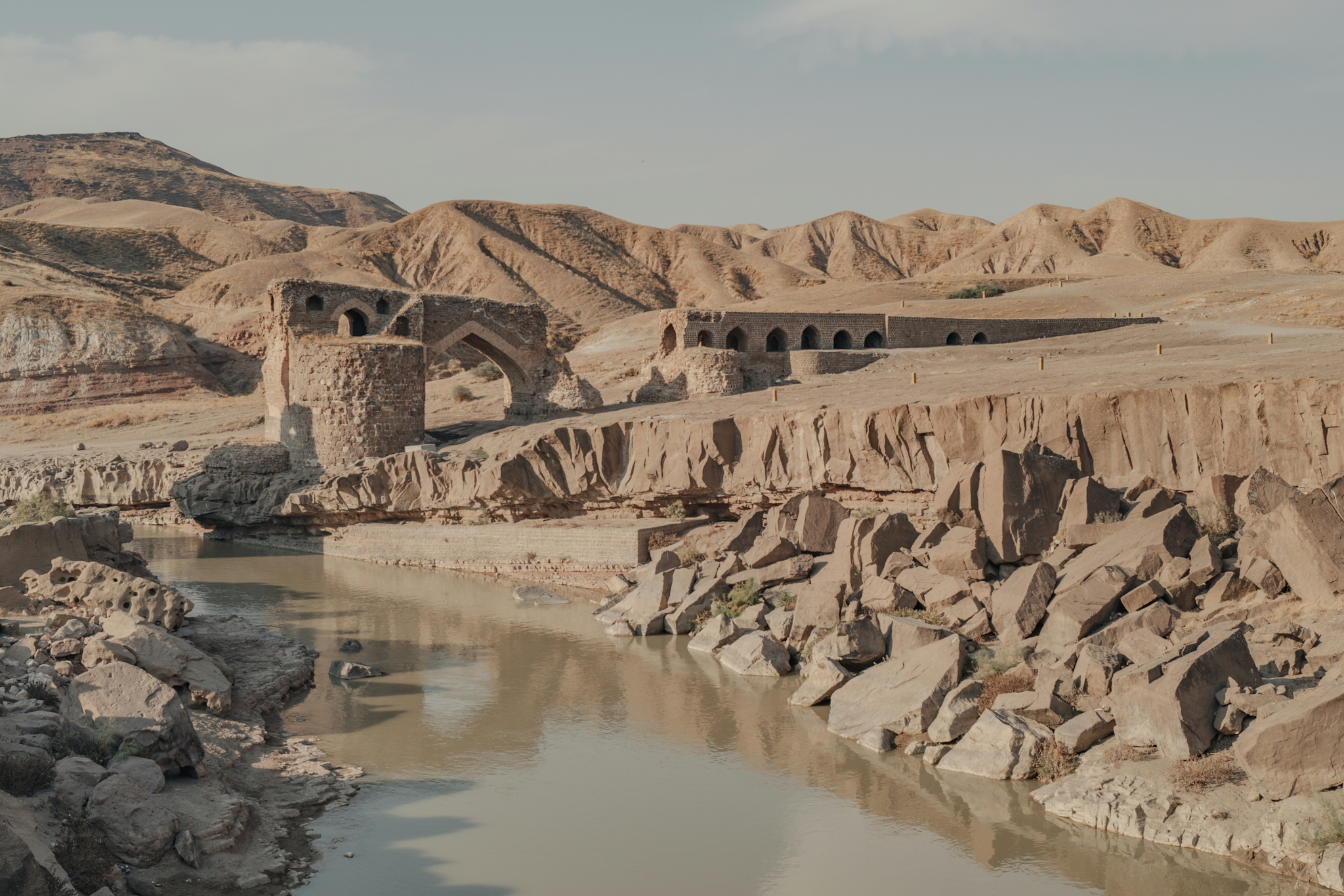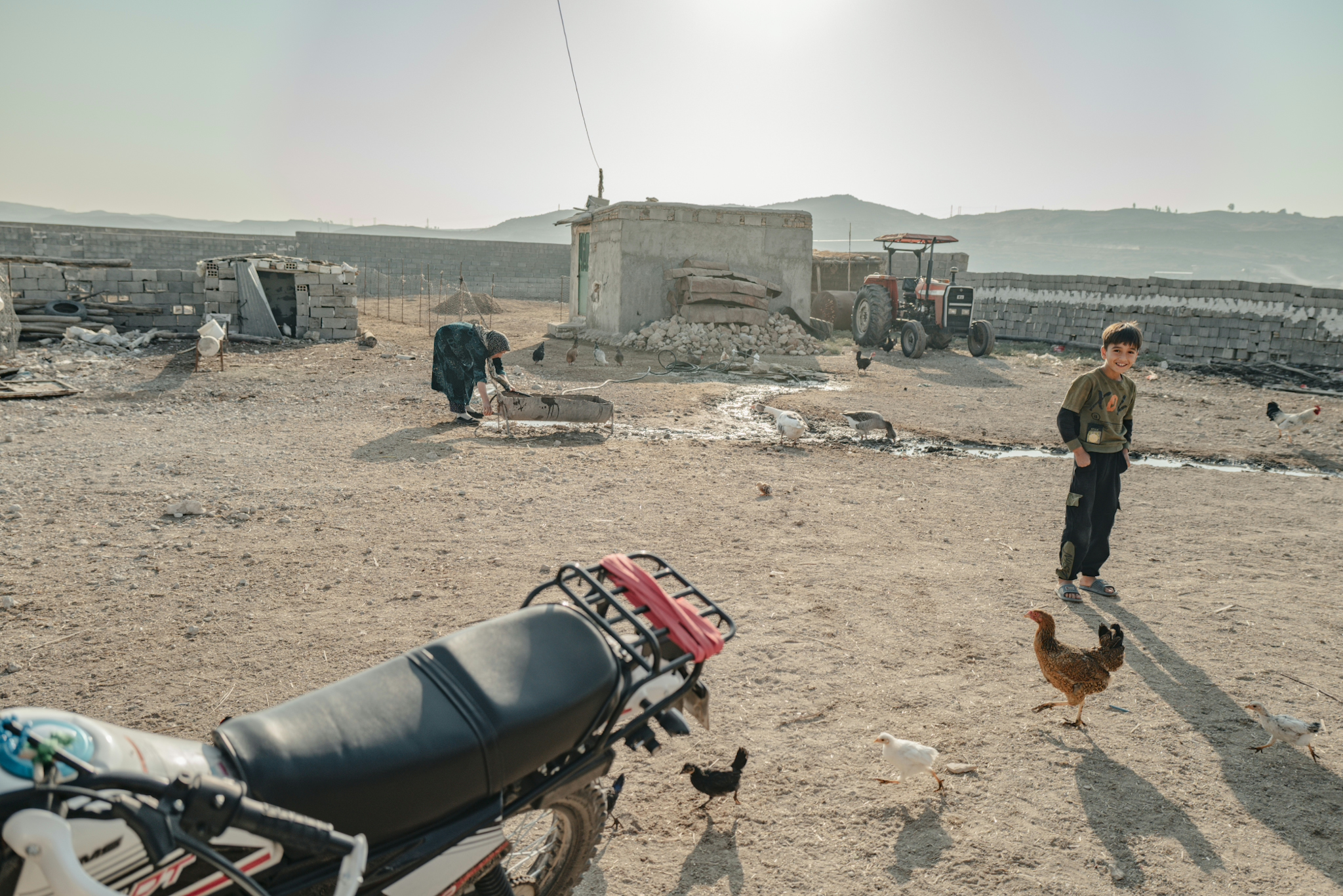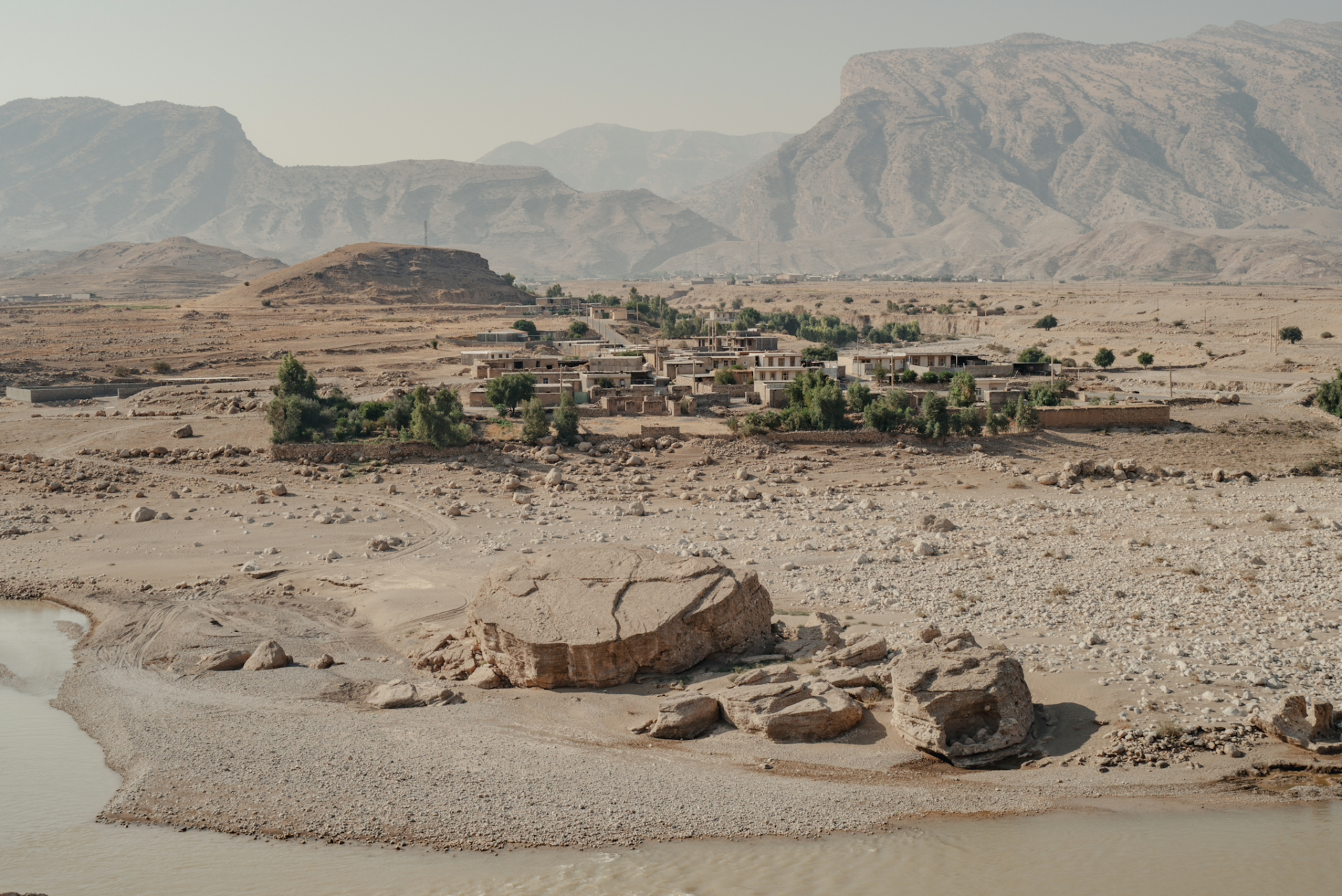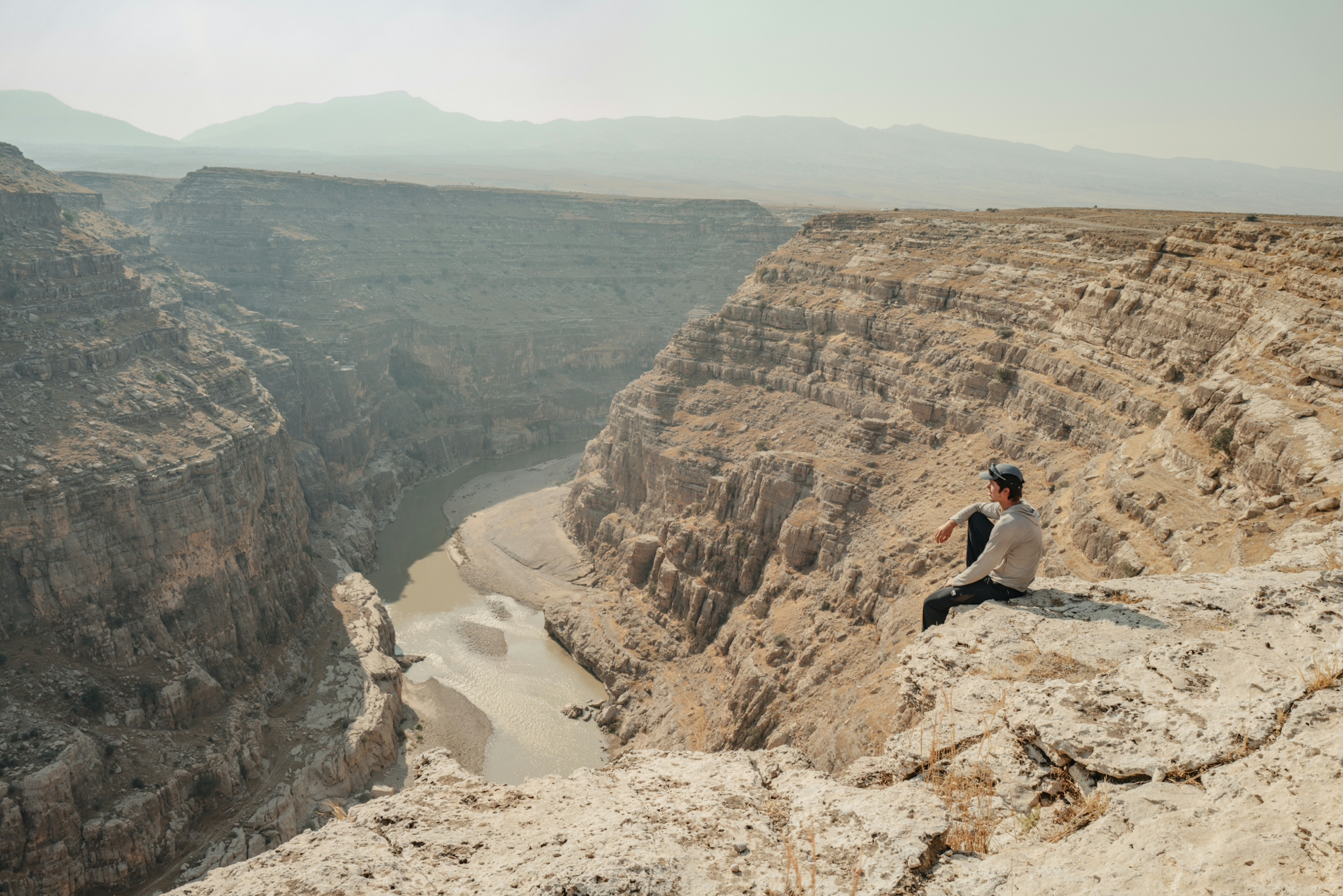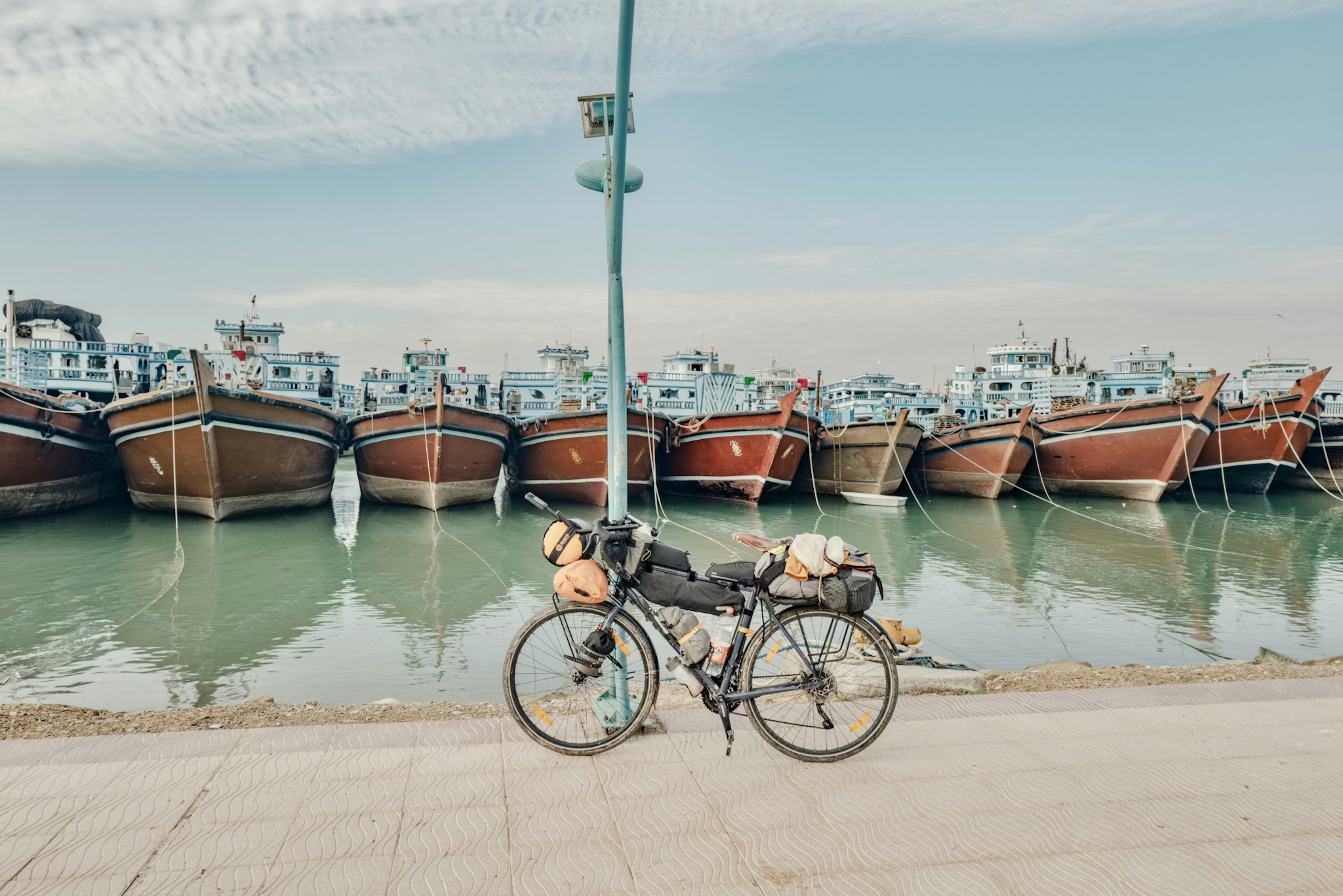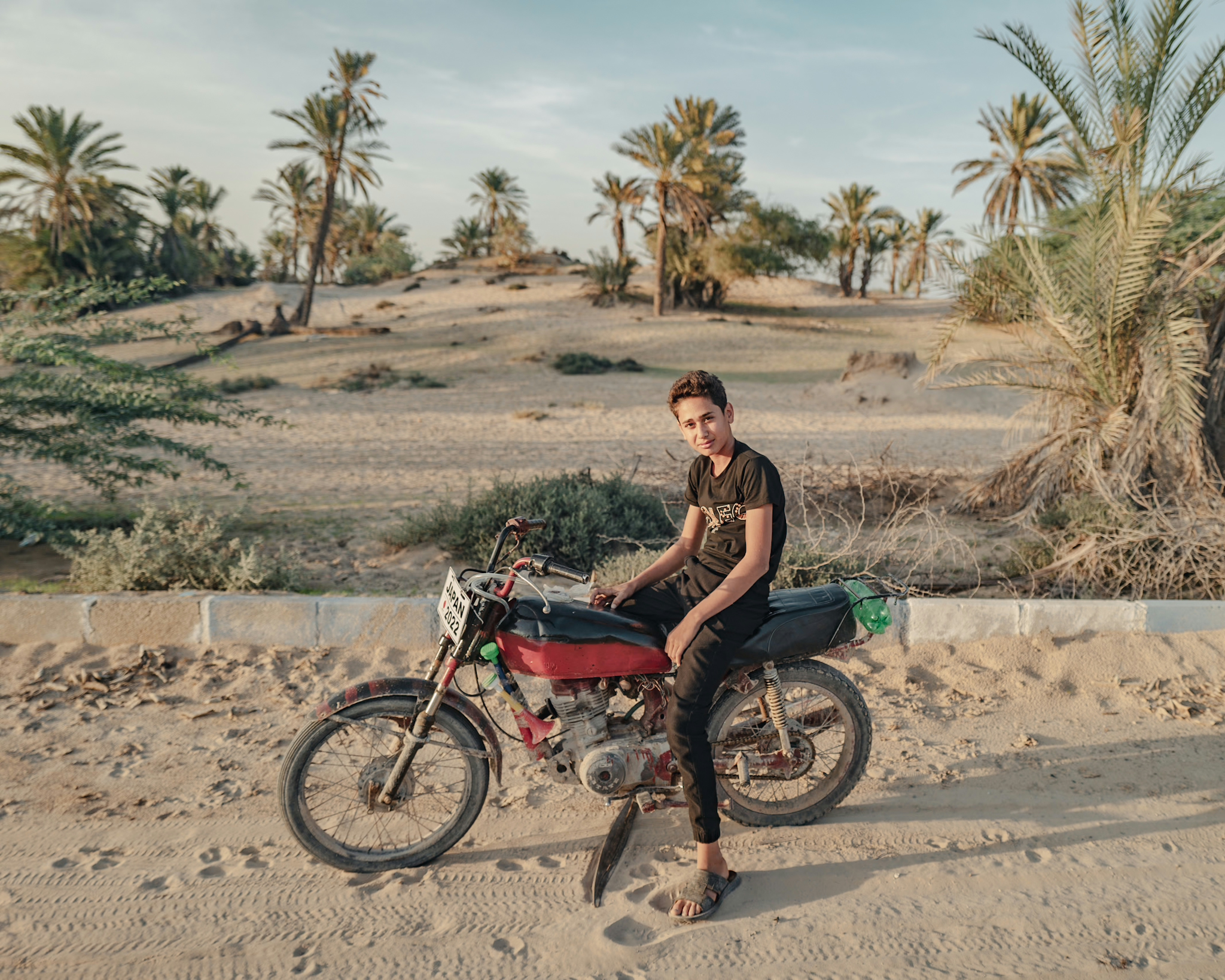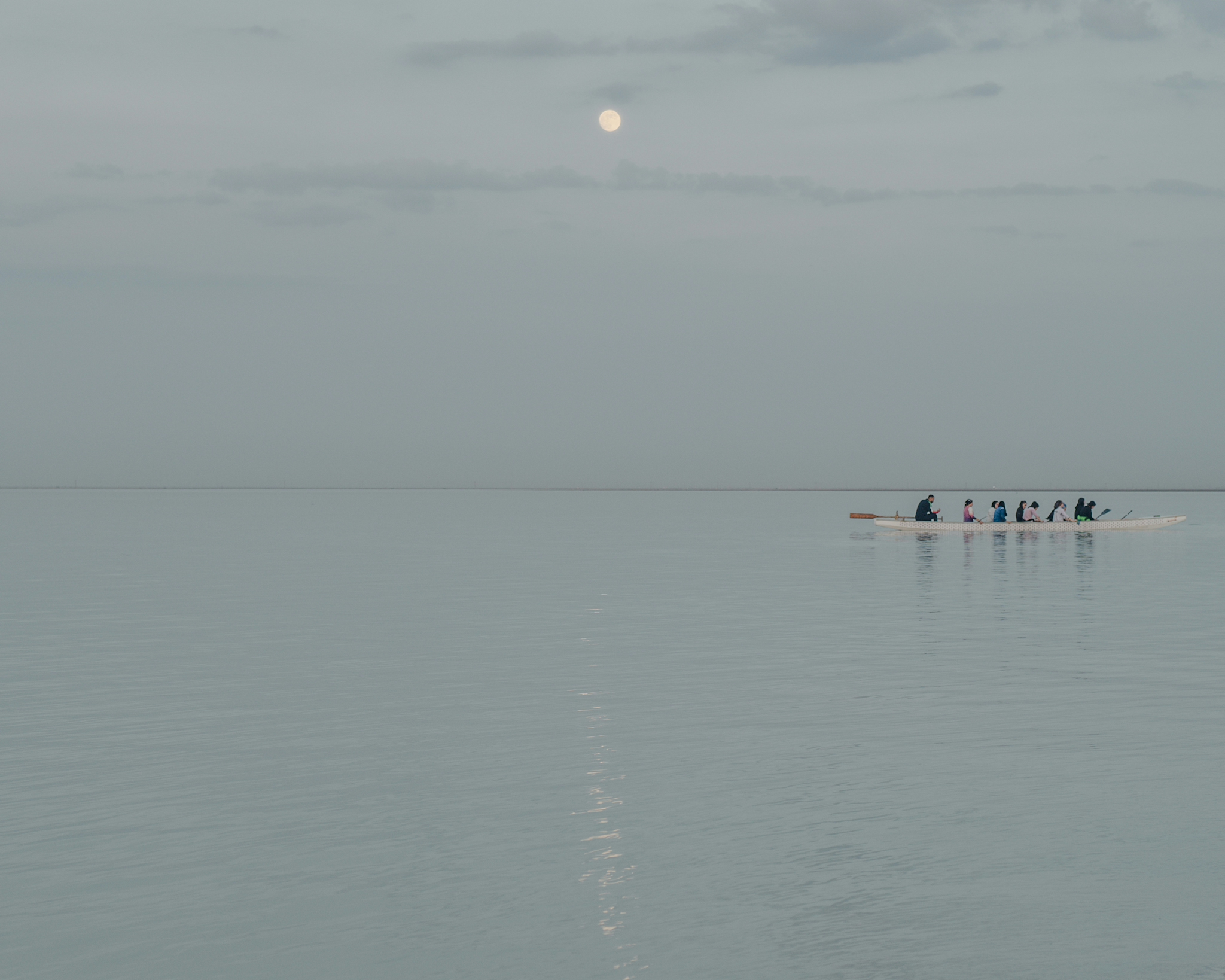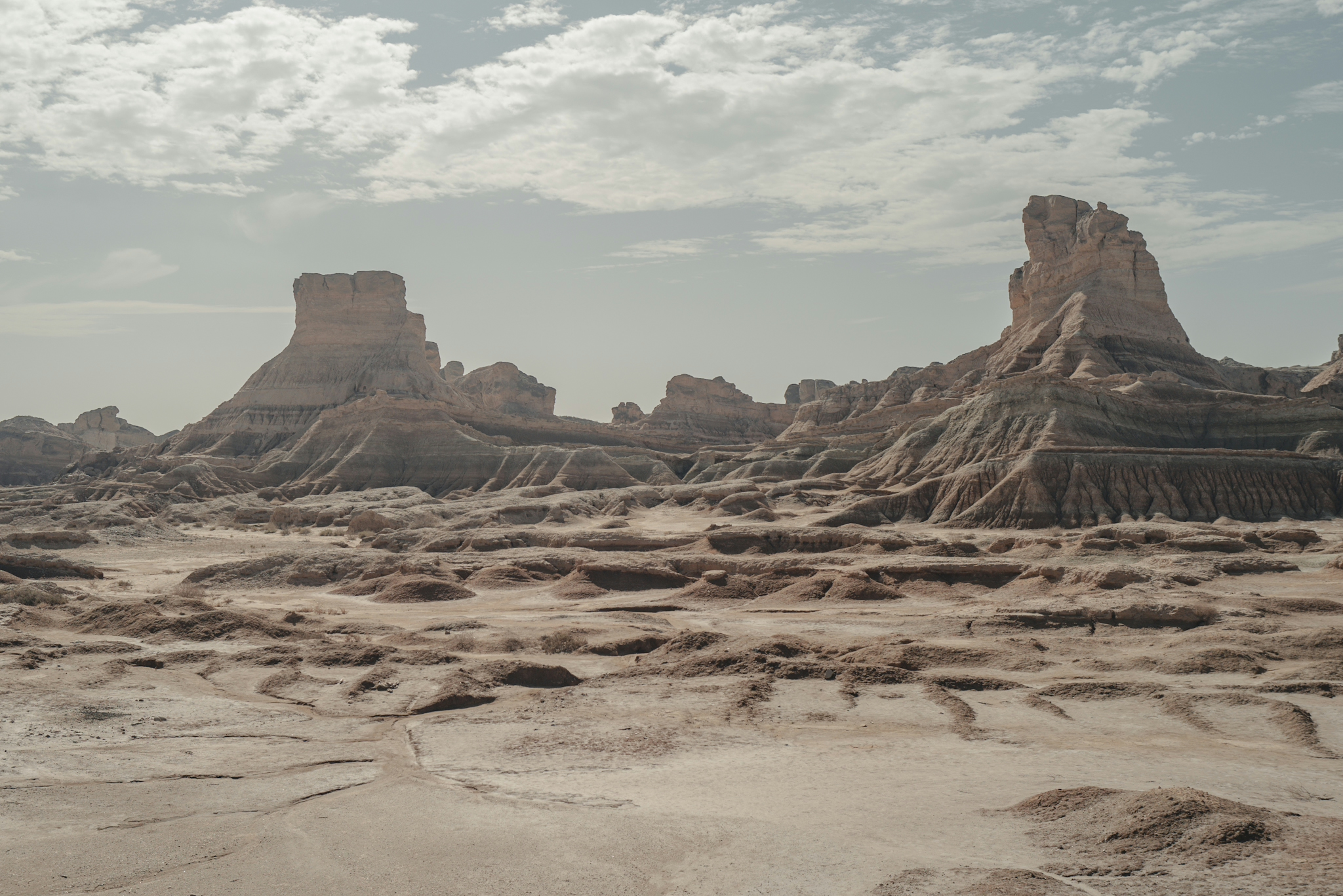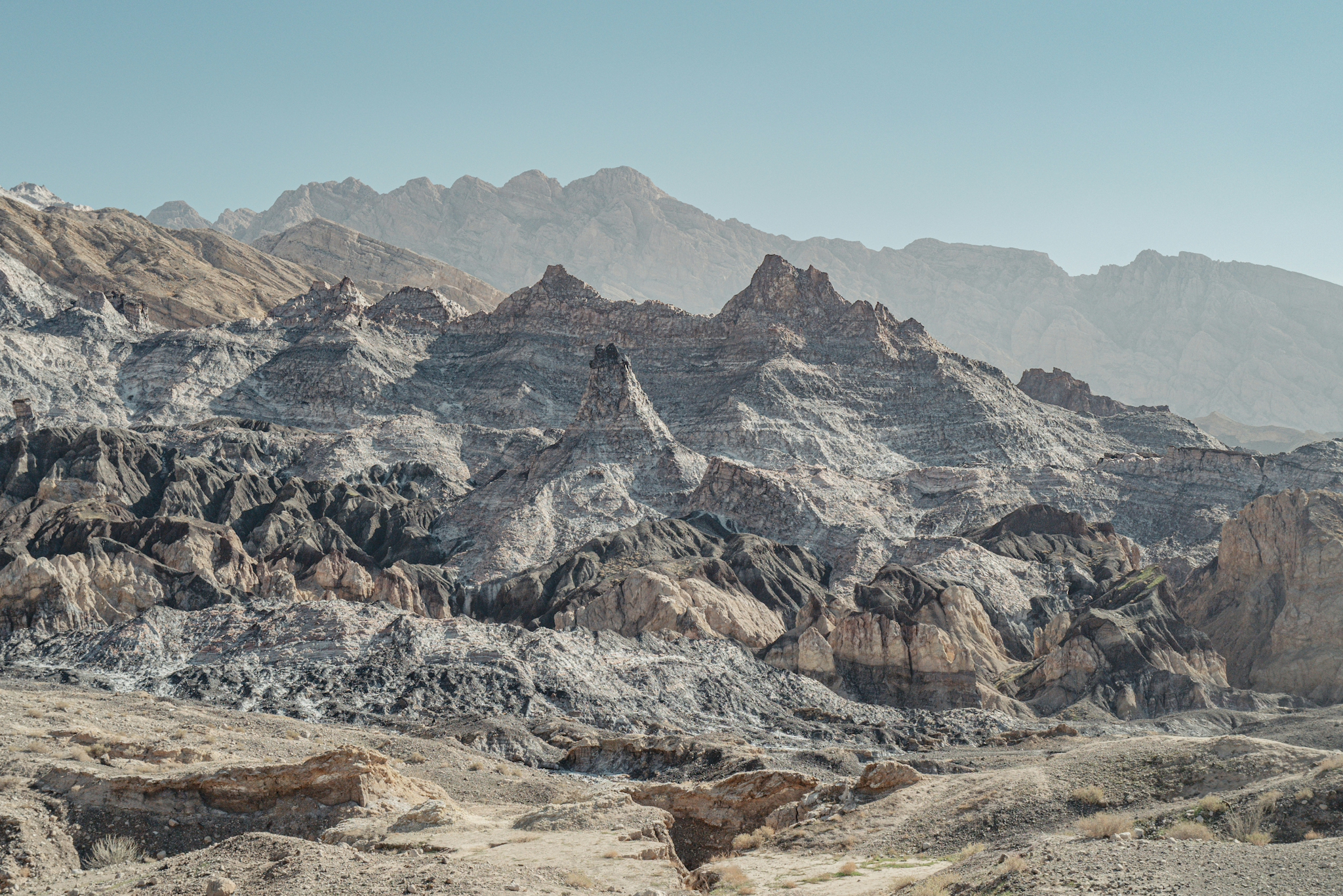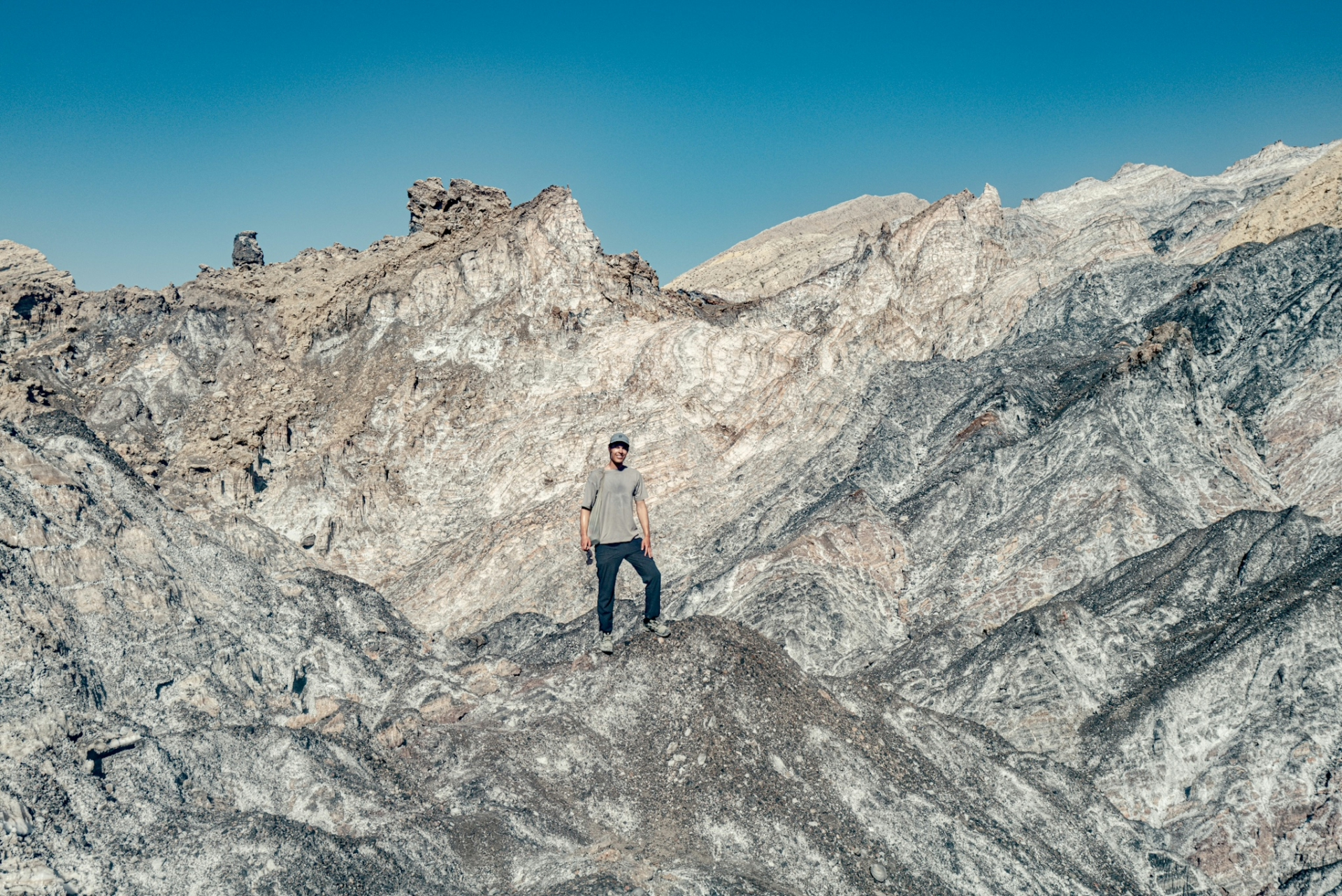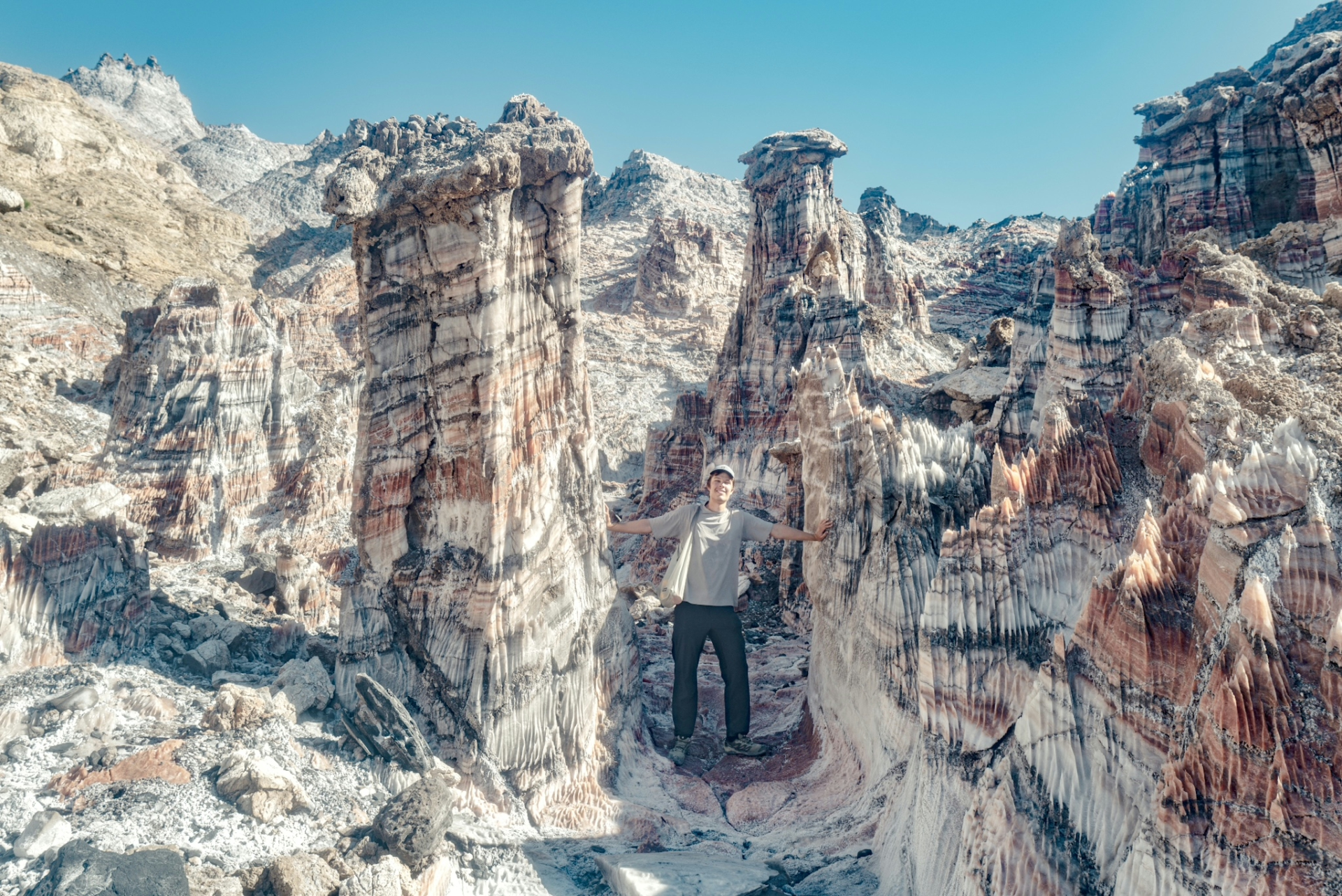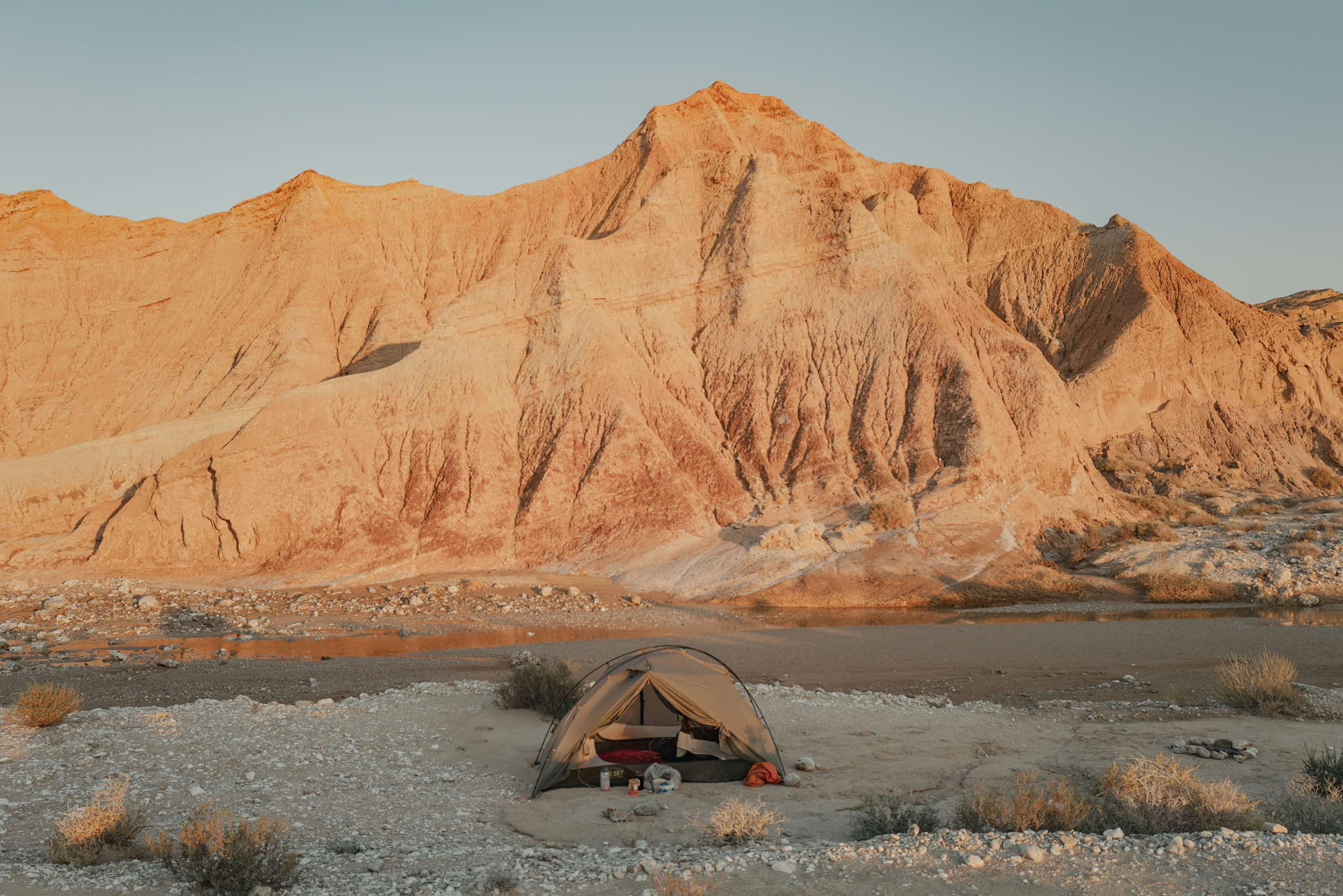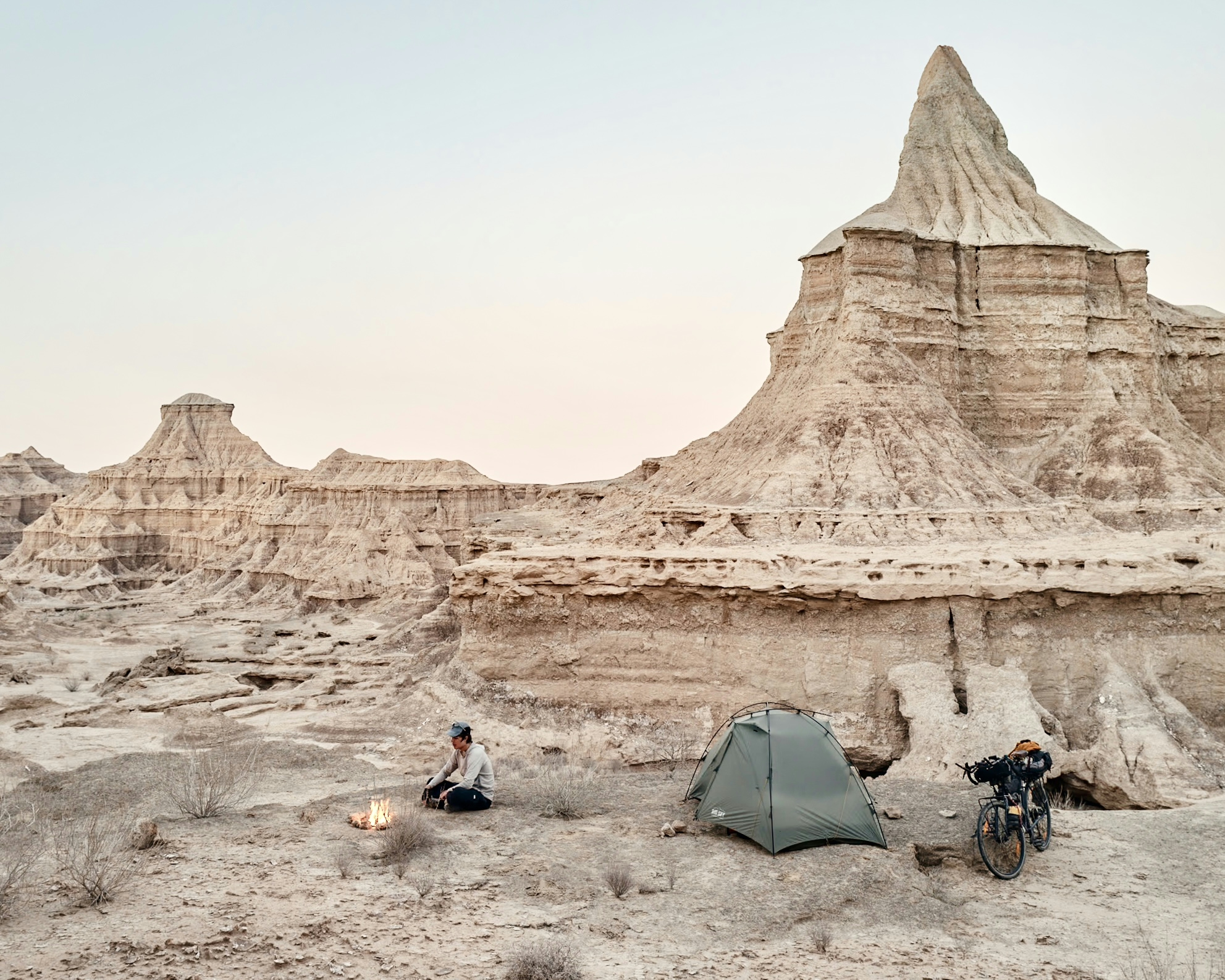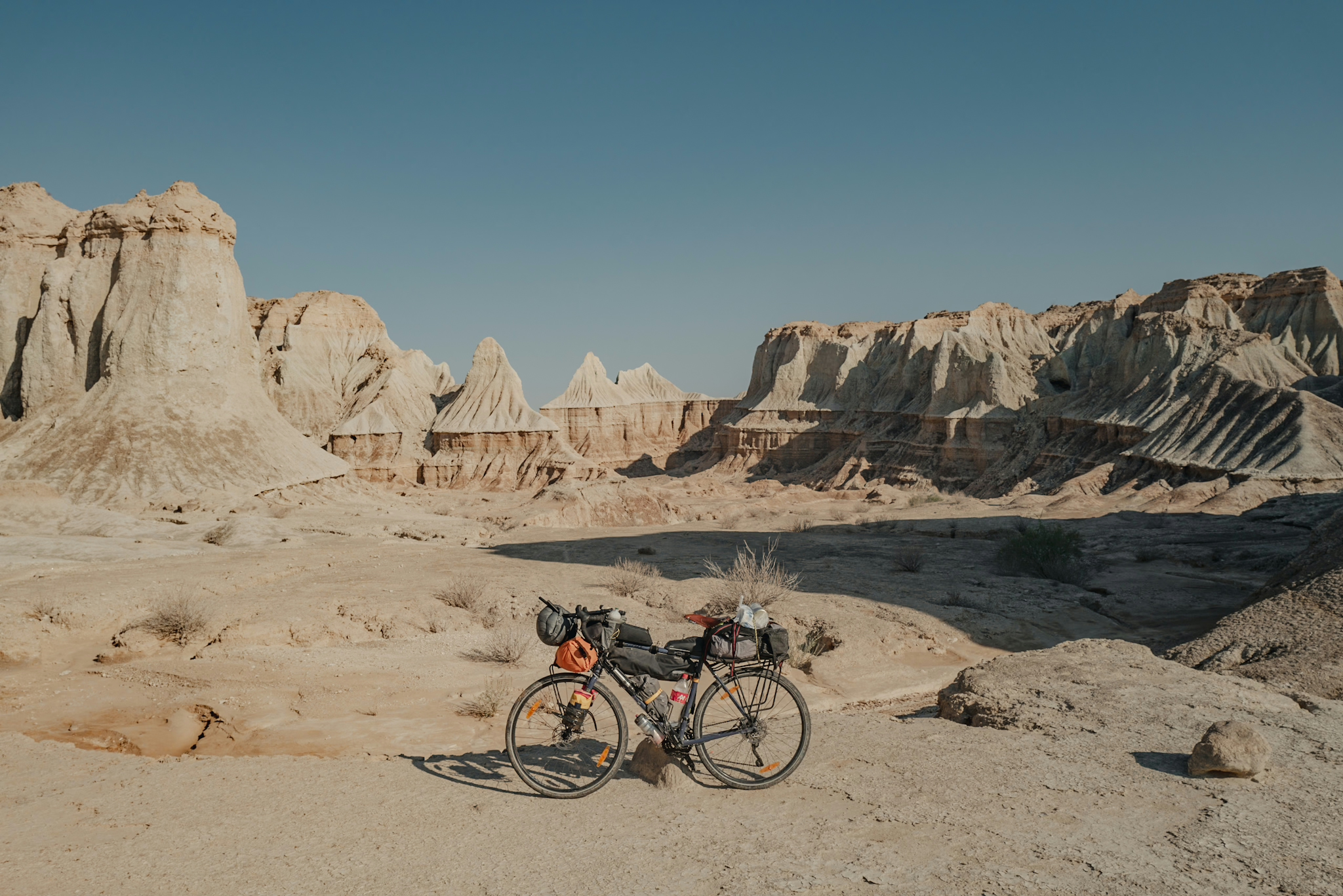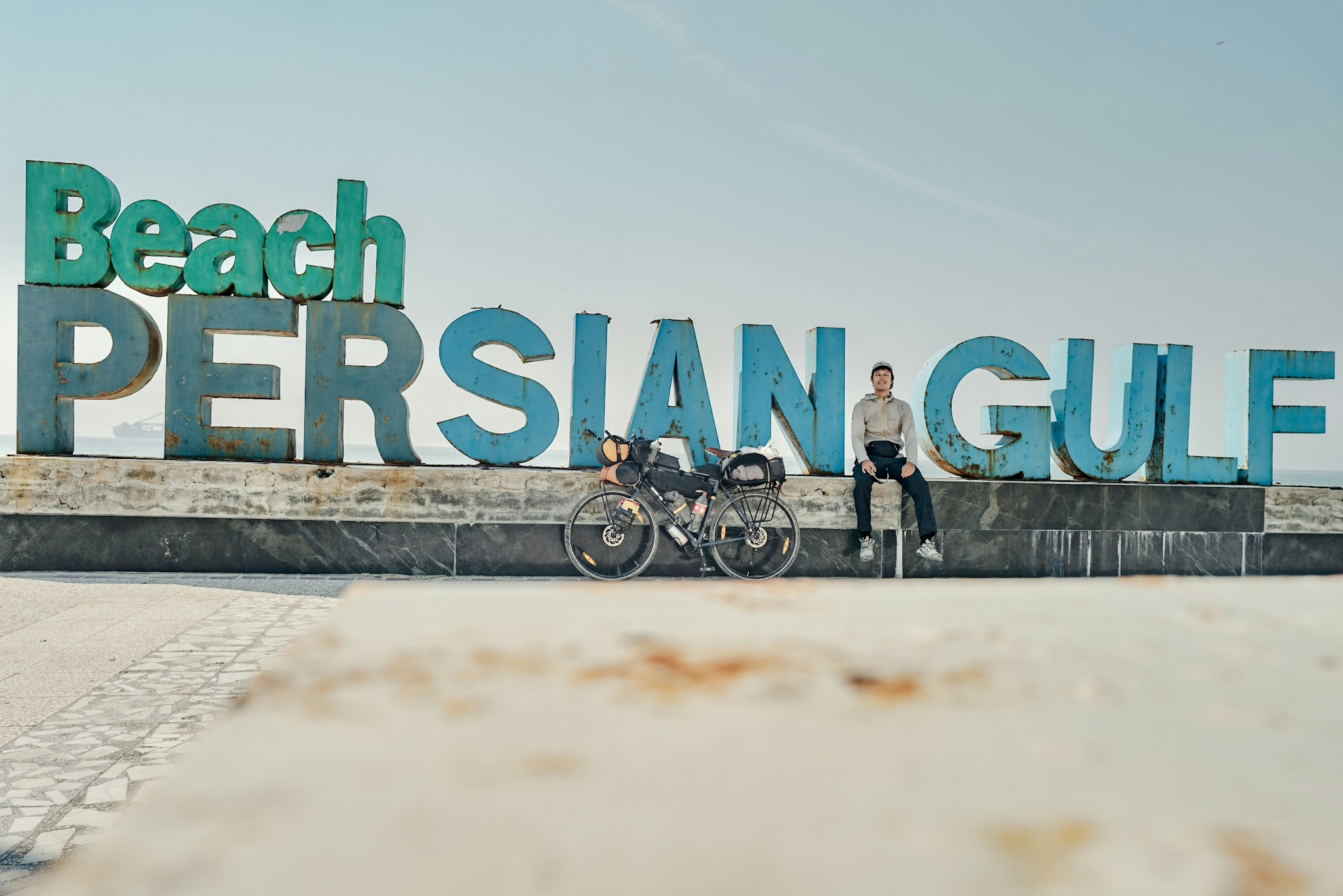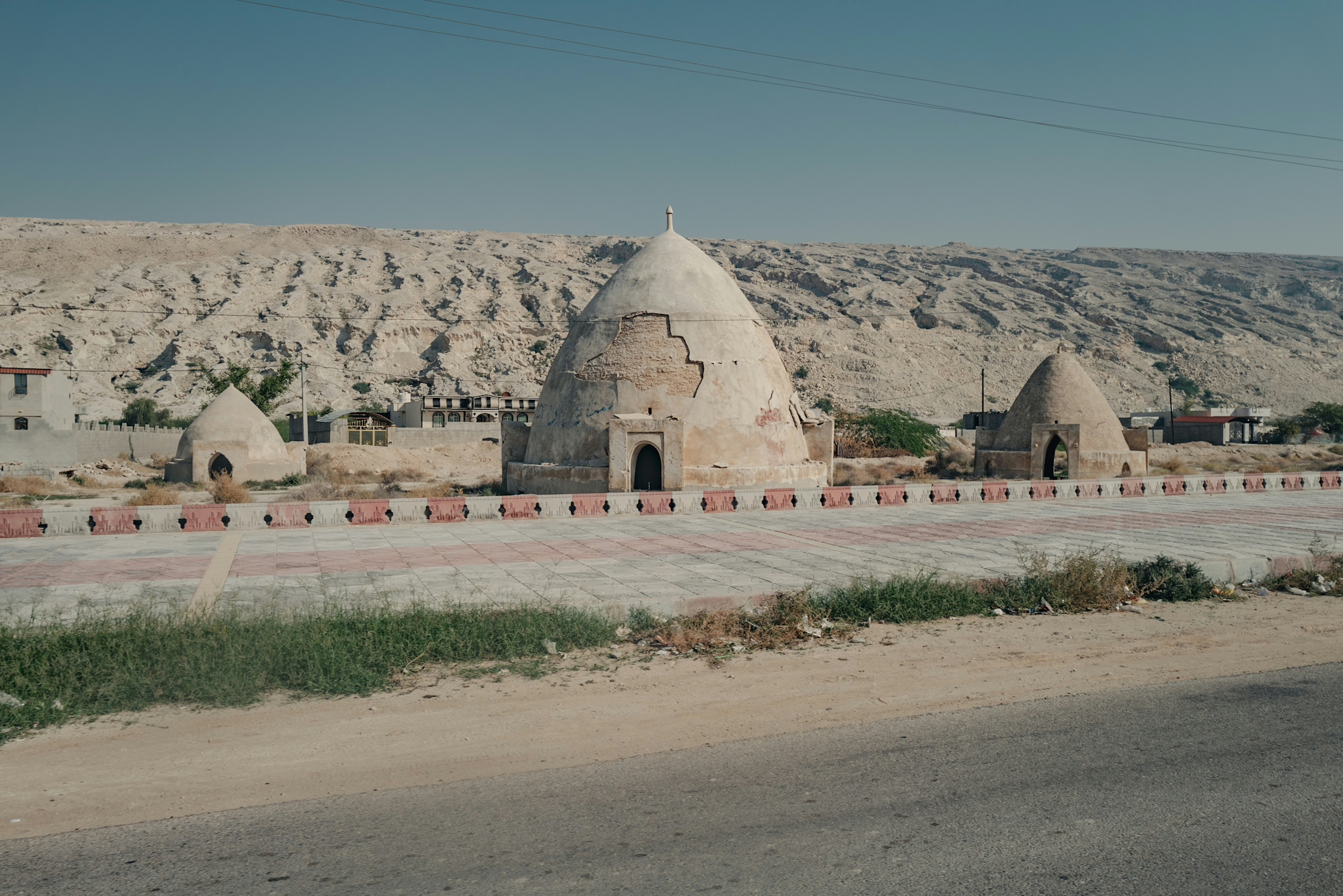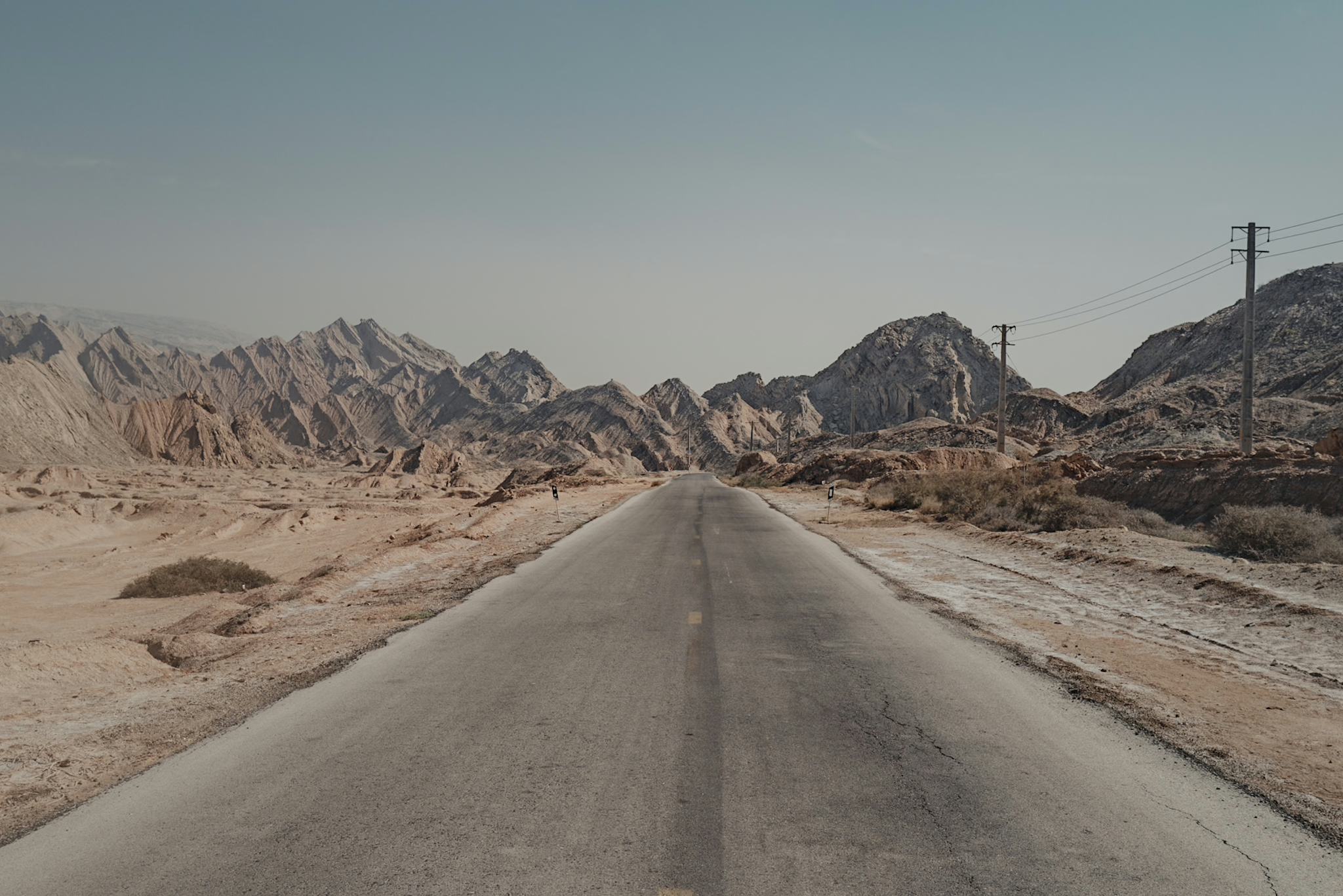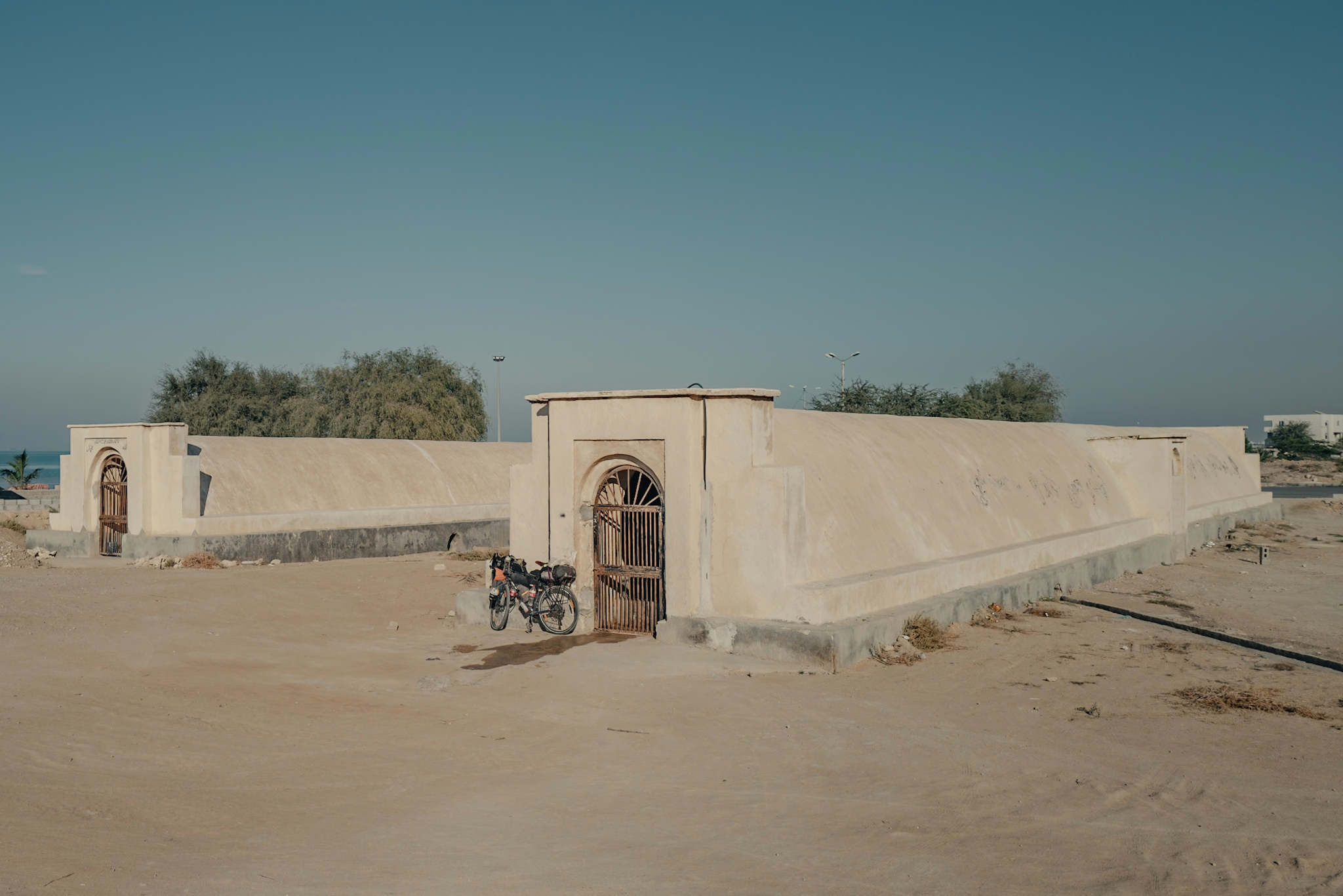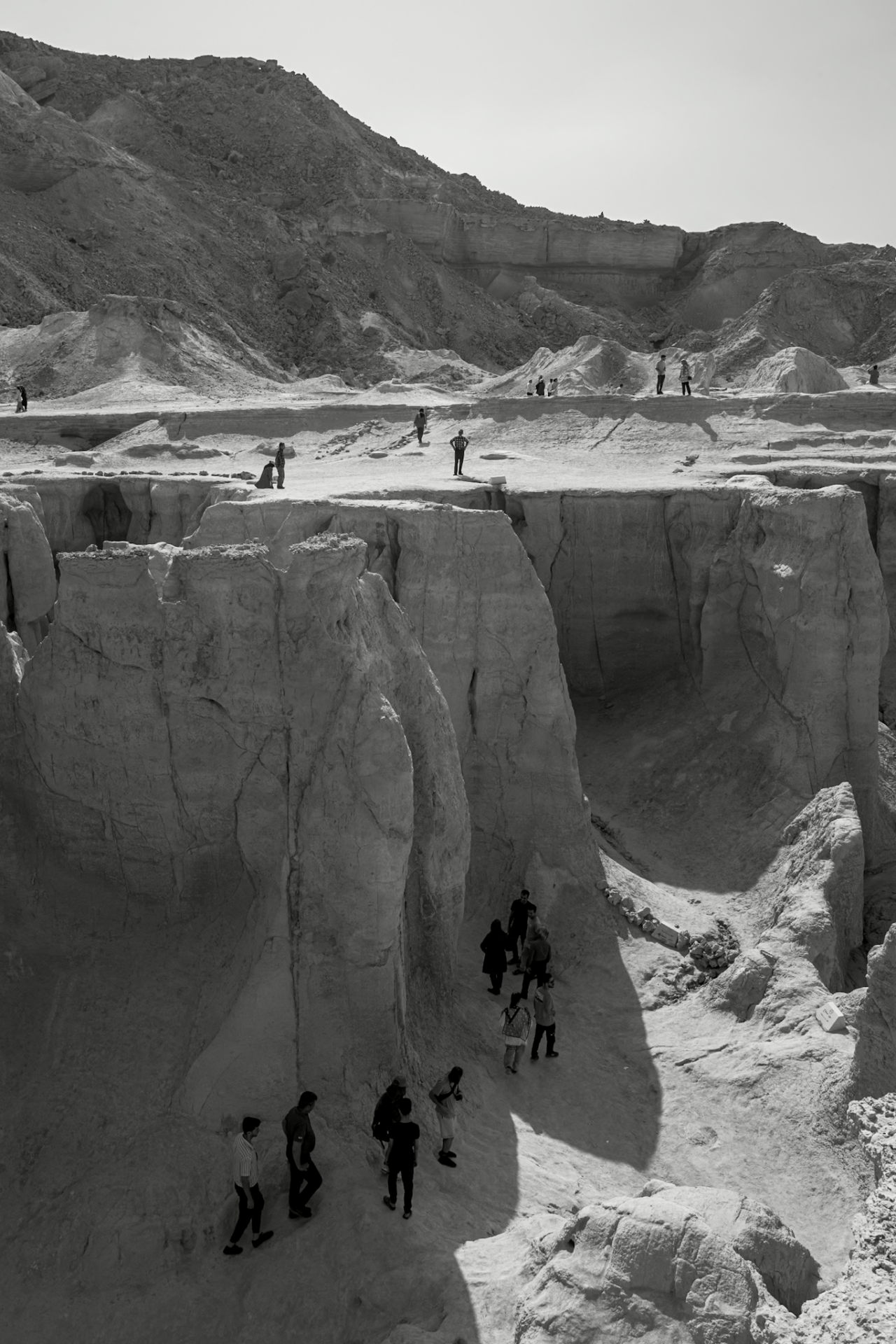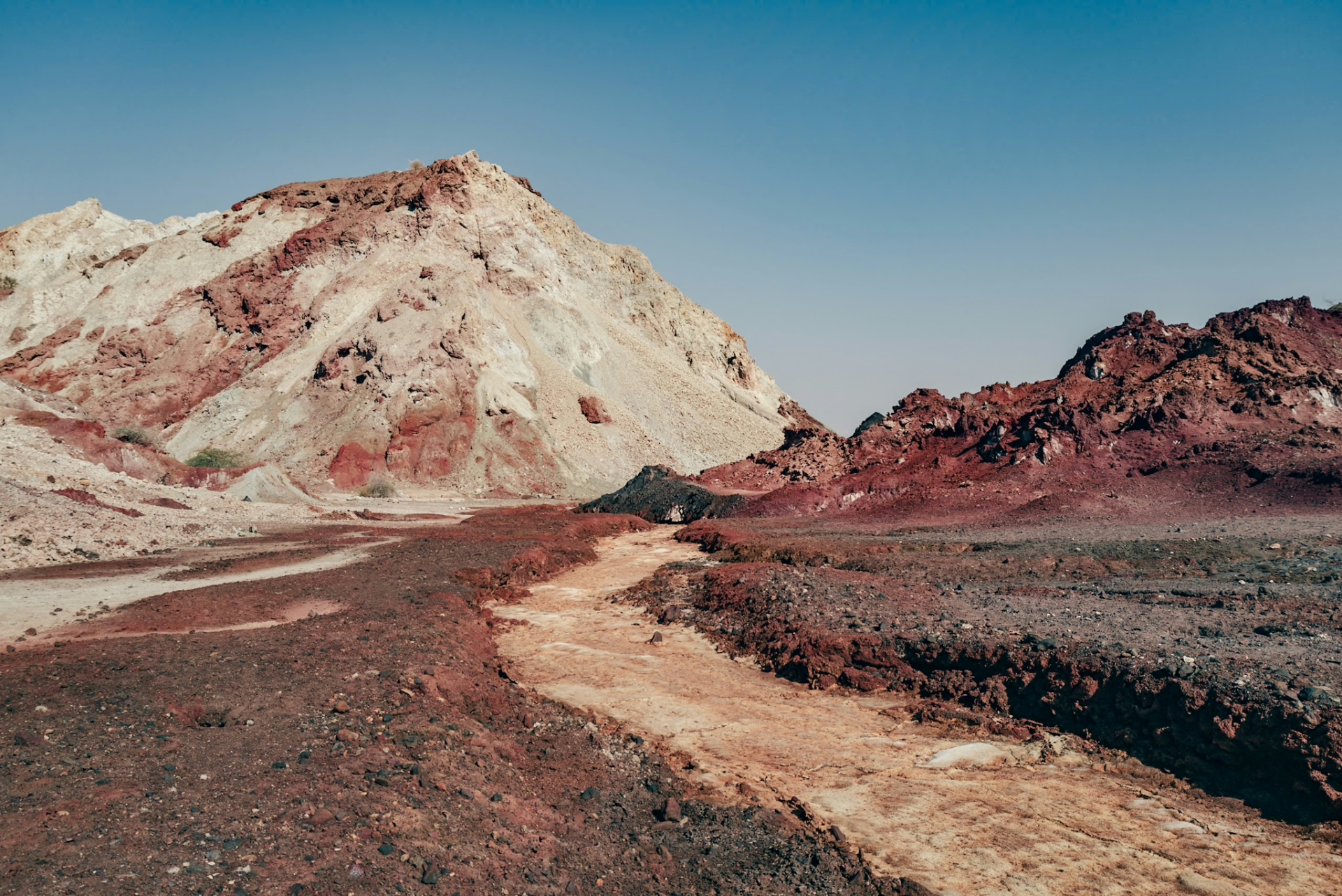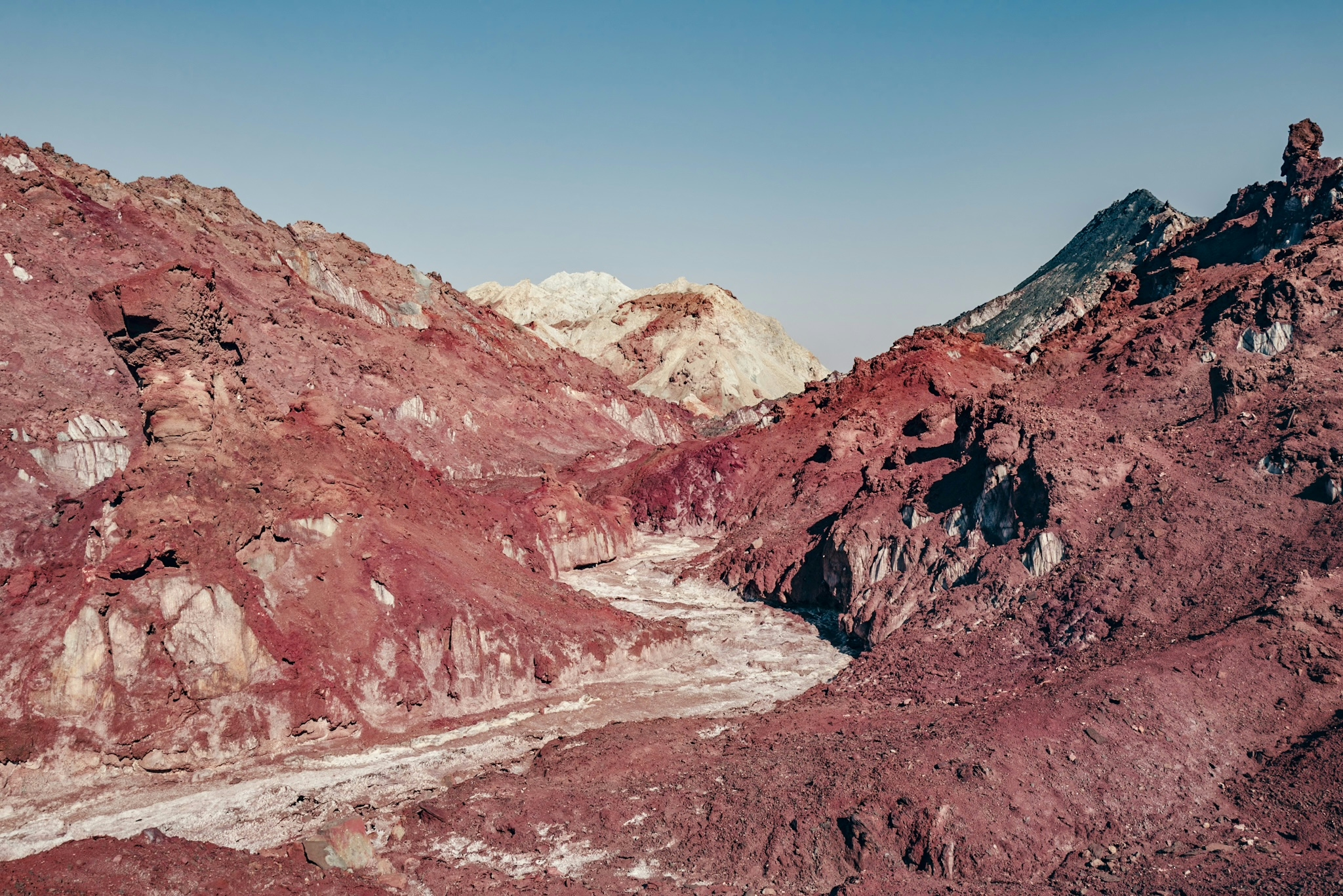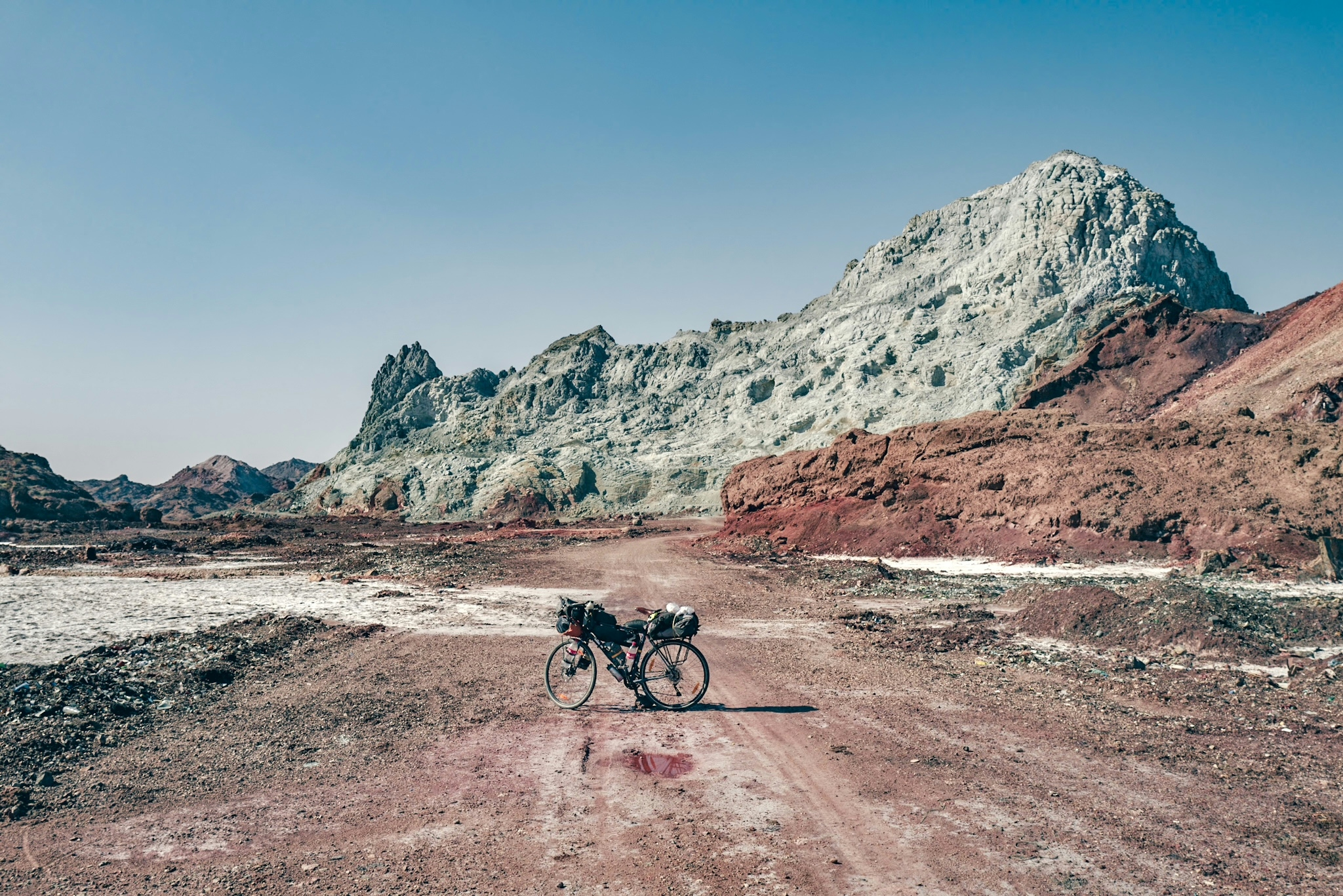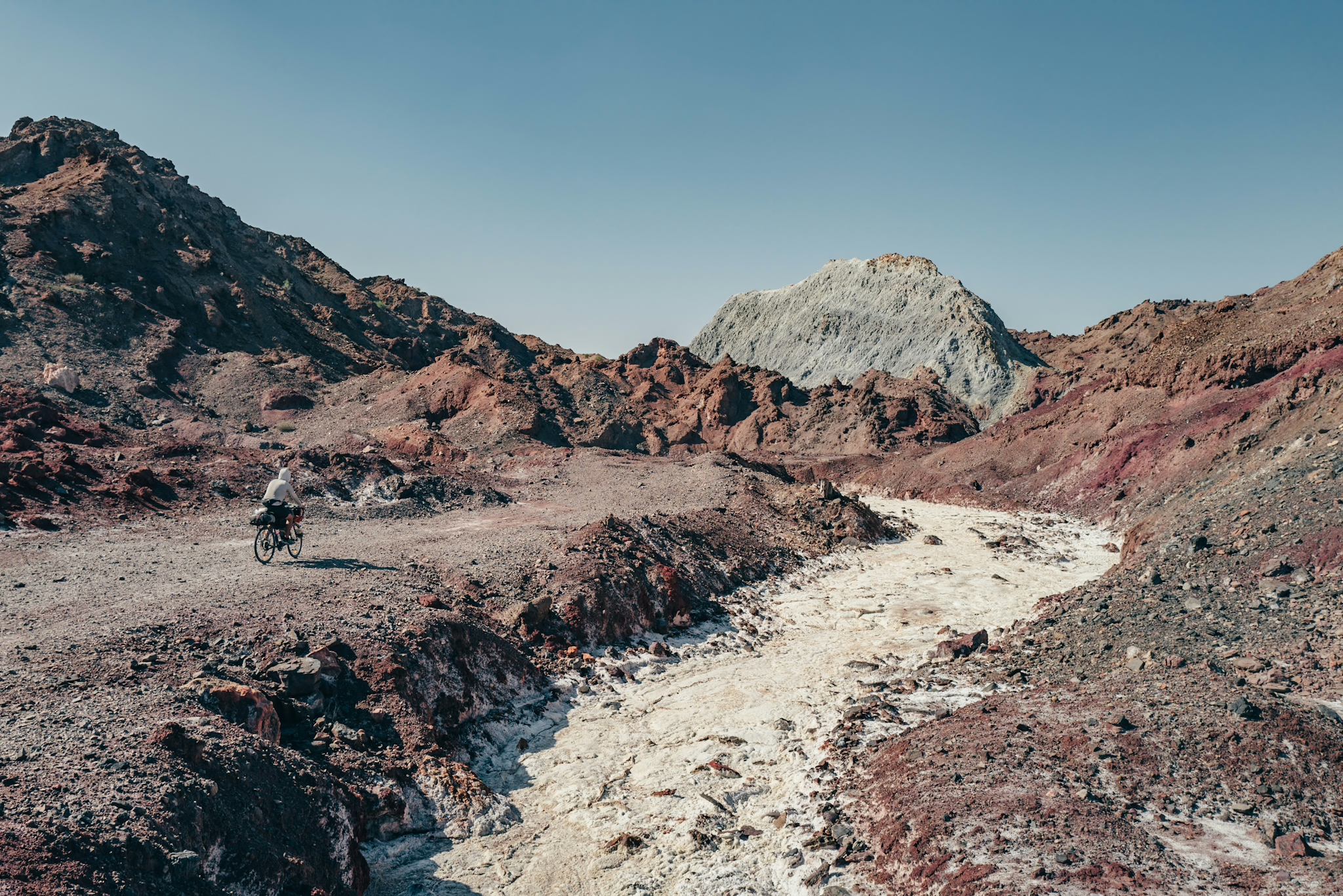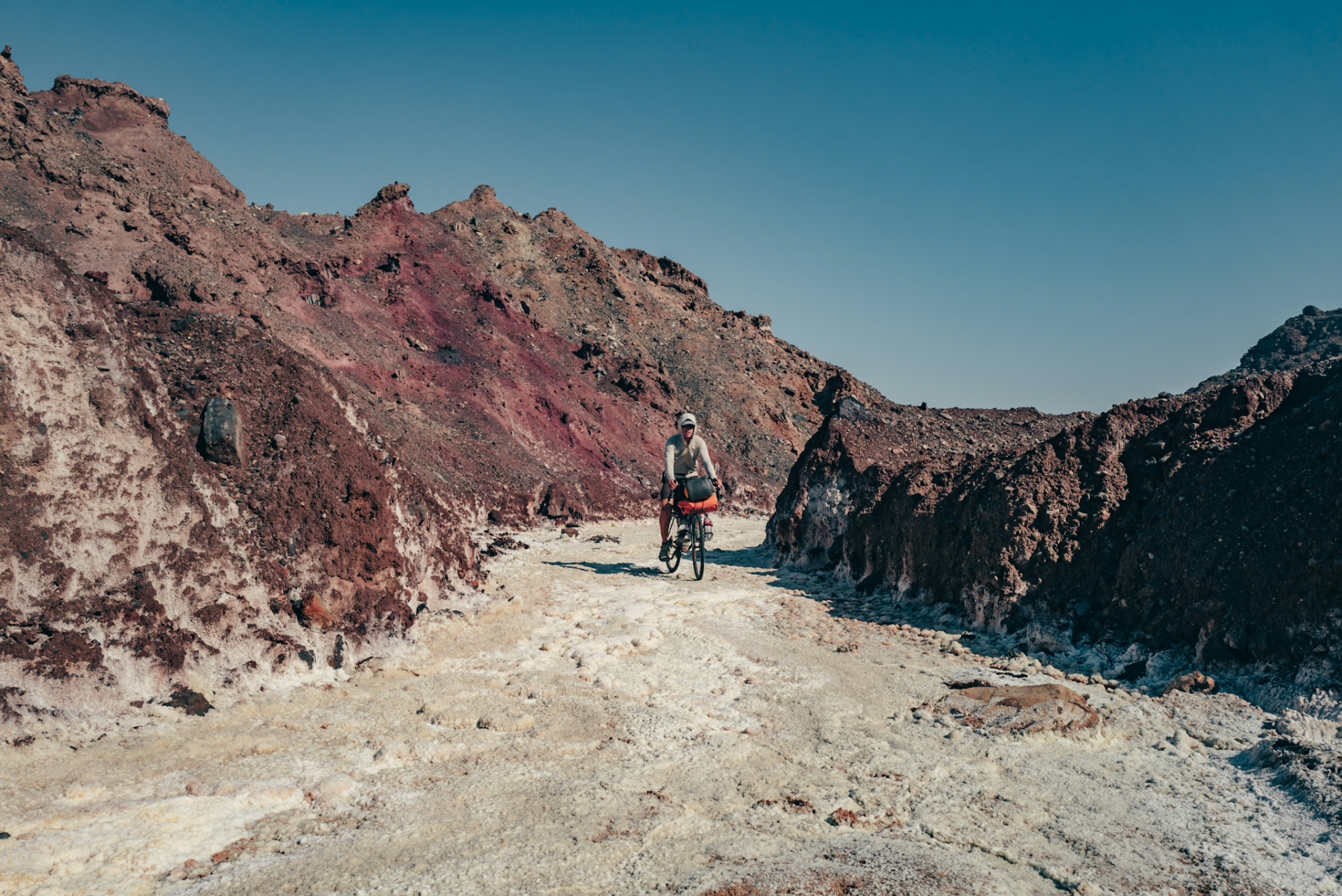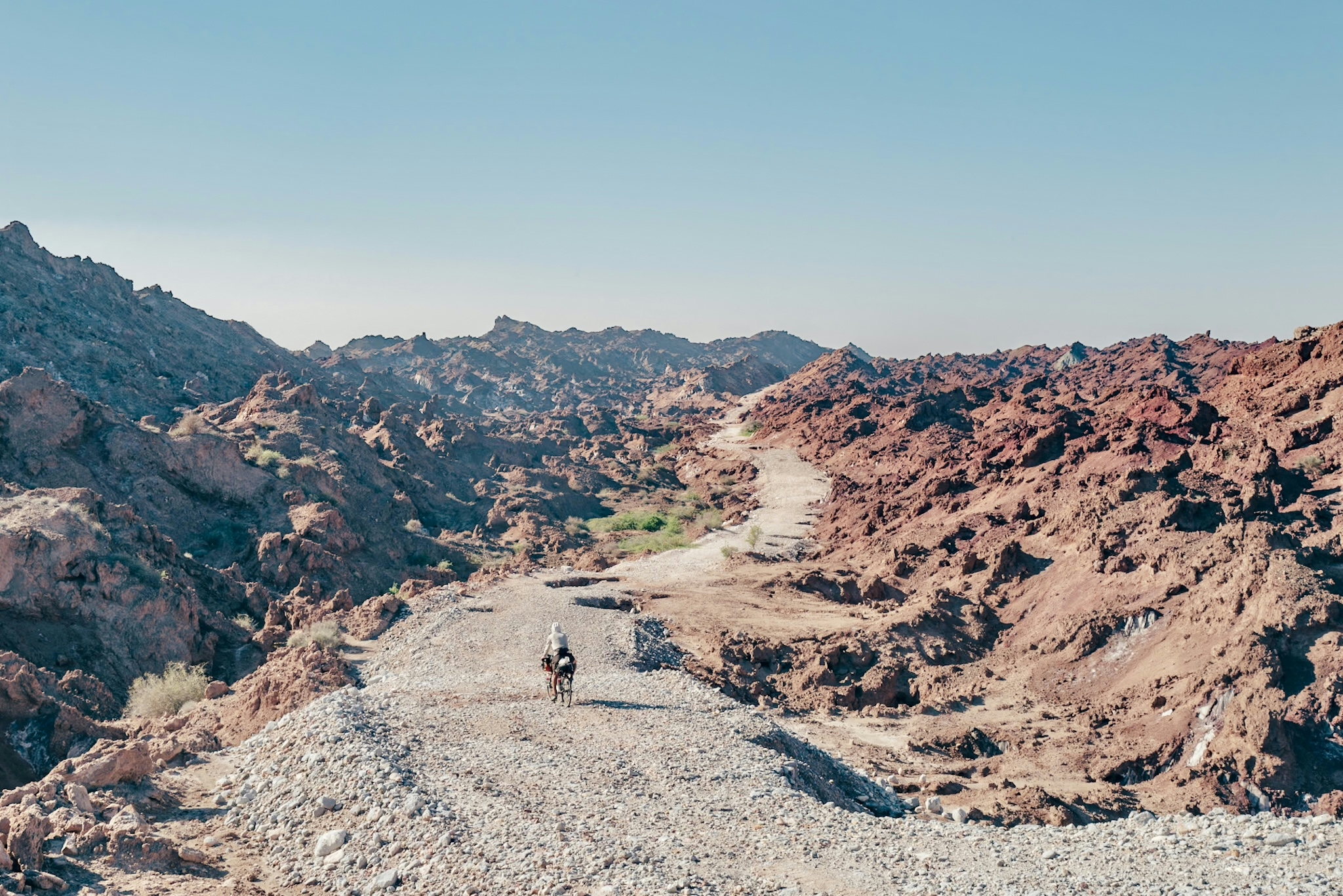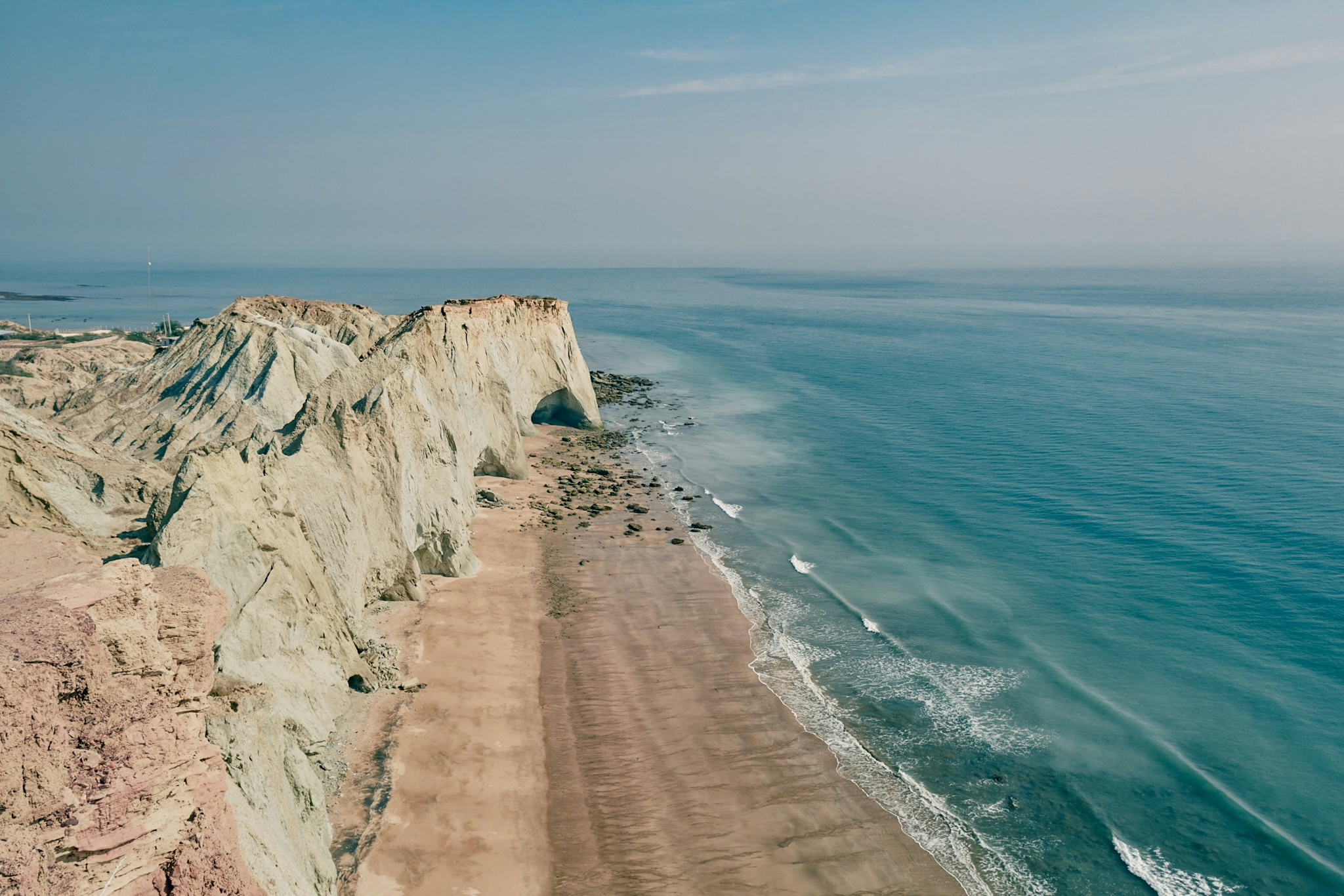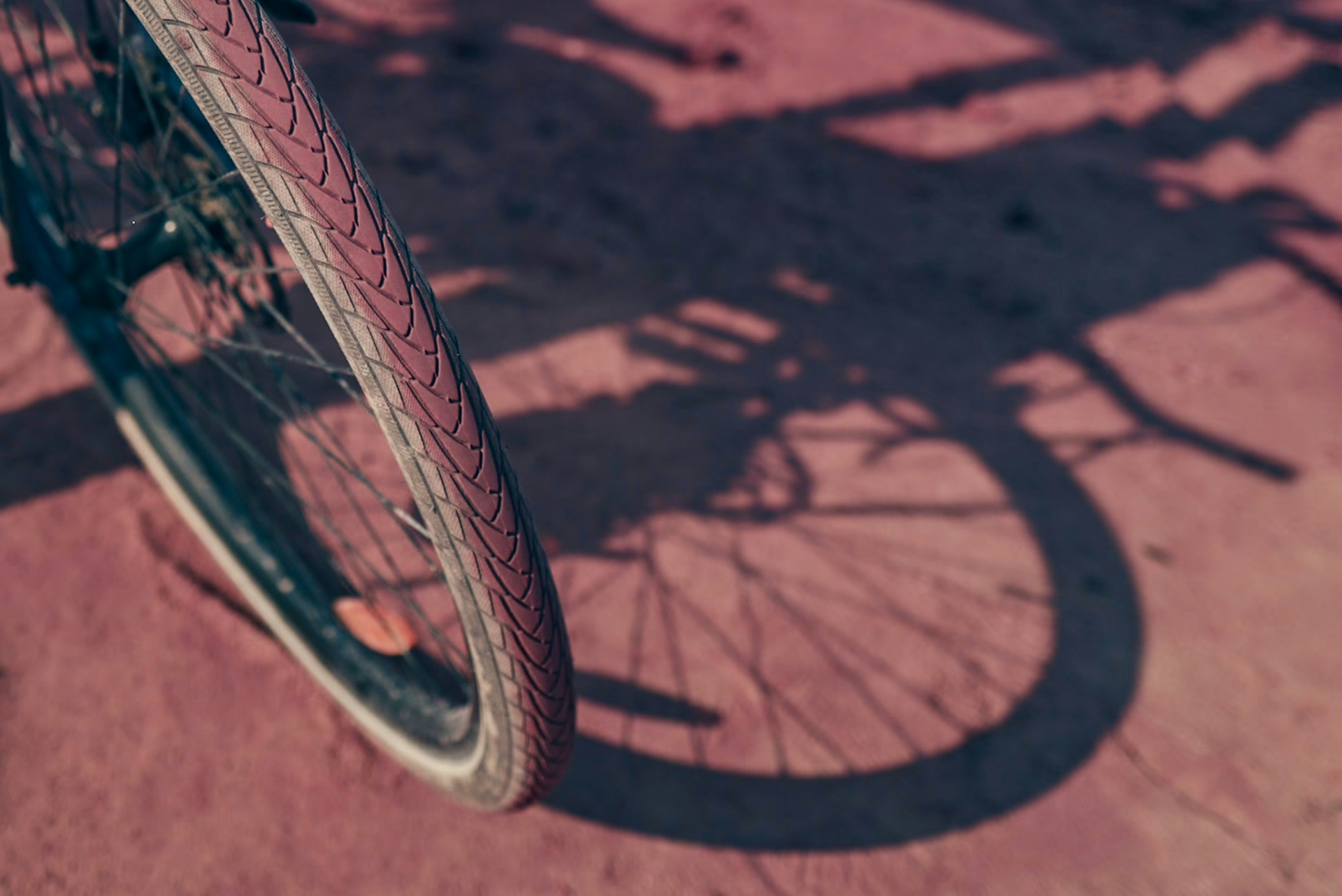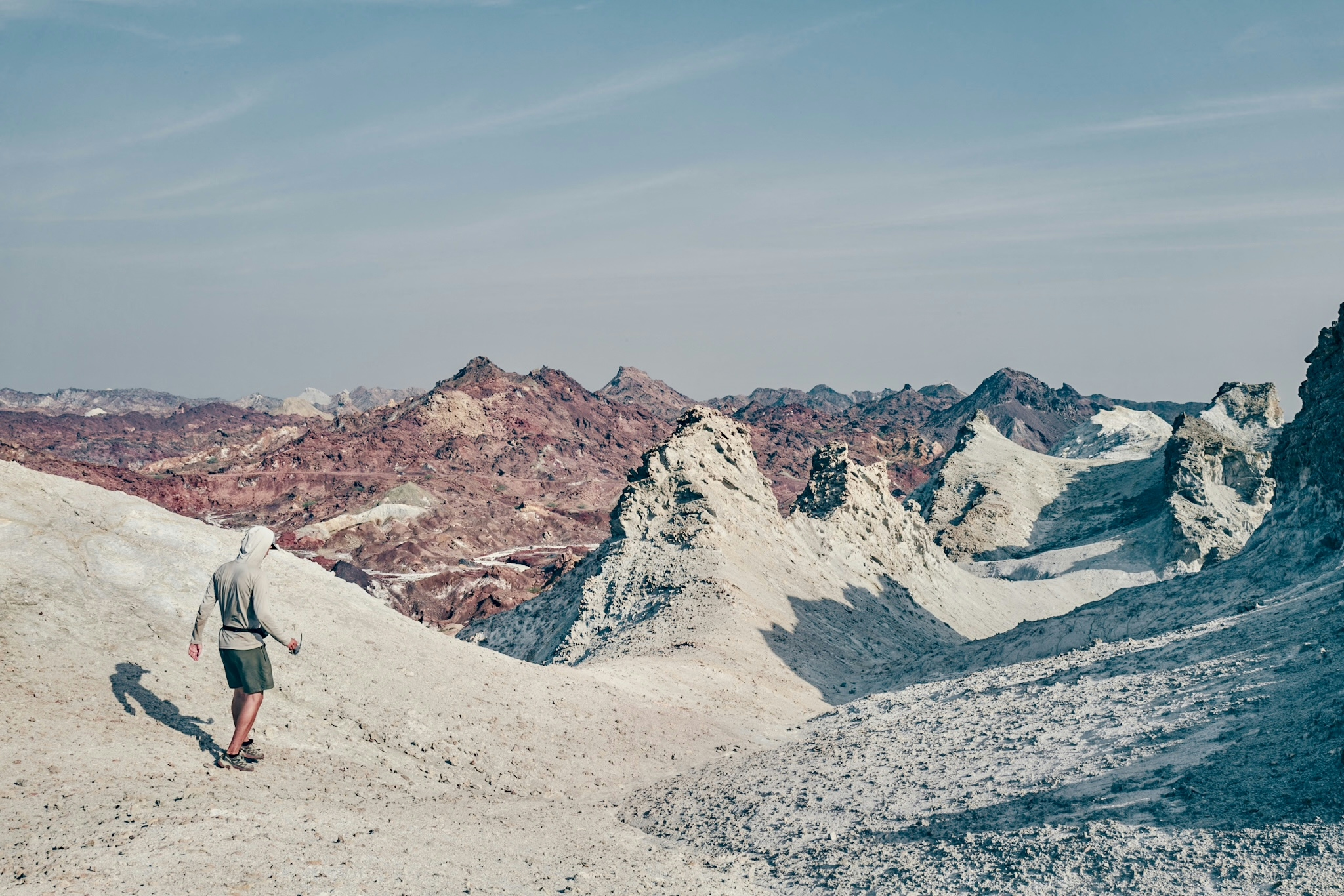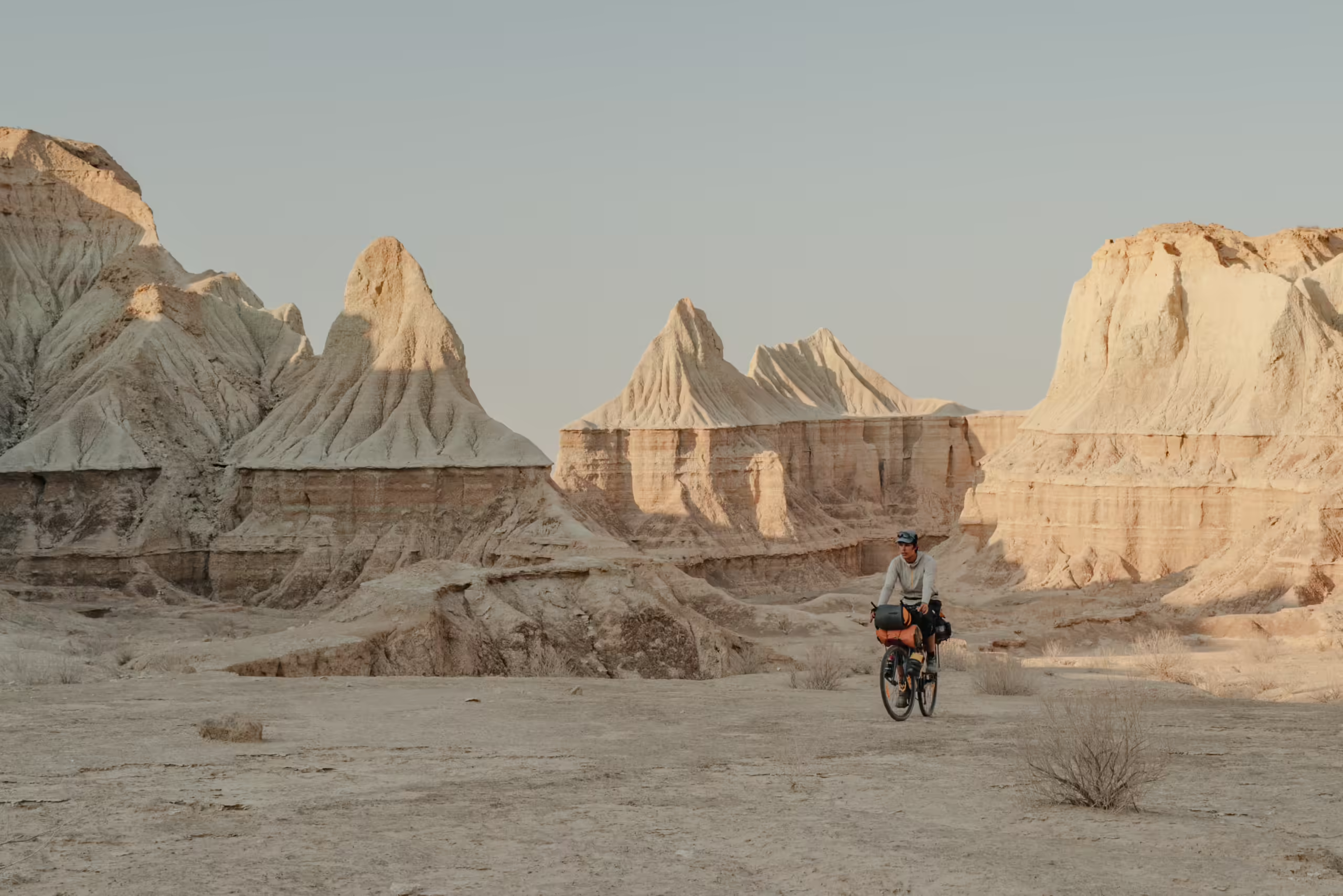
I entered Iran from the Parvez Khan border with Kurdistan-Iraq. The border crossing was quite chaotic, as it is the main trading port between the countries it is very dusty and full of trucks.
After some initial confusion about my bicycle and passport they eventually stamped my visa (they only stamp the paper, so don’t lose it) and I was in.
Regarding my route, I had chosen to cycle along the Persian gulf instead of the more popular route of passing through the history-rich cities of Isfahan, Shiraz, Yazd, Kerman etc. I’m just not a fan of cycling in big cities.
On my way to the coast I first passed through the mountainous Kermanshah, Ilam and Lorestan provinces. The Zagros Mountain Range offers some spectacular landscapes and scenic villages, which are mostly inhabited by Kurds. This means you will be overwhelmed by their hospitality, constantly inviting you for tea, food or even to spend the night at their place.
After crossing the more arid Khuzestan province and a quick stopover in Shushtar, famous for its historical hydraulic system, I reached the coast and the major port city Bushehr, where I extended my 30 day visa for an additional month.
Cycling over 600km along the coast I came across deserts with alien-like rock formations and hills, date plantations, massive oil refineries and pristine beaches.
But beware: One day I left the main road and followed a sandy path along the coast, and after a turn around a cliff I was in trouble: I had cycled into the coastguard full of military ships and was instantly spotted by the security. I got to spend the rest of the day in a small container explaining to multiple officials why I’m not a spy, while my phone and camera was thoroughly checked. Luckily I had Farsi downloaded for offline use on my phone, as no one spoke English. Eventually I convinced them that it was an accident, as there were no signs or gates on this small path, and they bought me dinner and let me go. I consider myself quite lucky to get out of this situation unharmed, as there are currently other western tourists sitting in prison for similar “crimes”.
From now on I would stick to the main roads.
Continuing south, I made one detour inlands to check out the biggest salt mountain in the Middle East, the Jashak Salt Dome. There is little information about it on the internet, and turns out you are only allowed to visit it with a tour guide, as it’s so massive it is easy to get lost. Luckily I could hire one on the spot: $15 for 4 hours. It was definitely worth it. One of the sickest places I have ever been. Surreal, multi-coloured salt formations, waterfalls, caves and more. Put it on your list if you ever plan to visit Iran.
Eventually I reached the island of Qeshm, which is more popular with tourists but in my opinion not more scenic than the mainland coast. For example the “Heisenberg Valley” (would love to know why it’s called that) is more spectacular and tourist-free.
From Qeshm I took a ferry to the tiny island of Hormuz, also called “Rainbow Island”. This island definitely lives up to its nickname and hype. It’s essentially a massive salt rock in the ocean, with mountains, rocks, beaches and salt rivers in all kind of colours. Make sure to cycle/hike the abandoned (and extremely rough) road crossing through the middle of the island. Again, you will have the arguably most surreal place for yourself as it’s not accessible by any sort of transportation. The local tourist crowd is also quite young and liberal (only place in Iran I could cycle/walk around in shorts) and will likely invite you for some food or to smoke some weed with them.
After over a week on Hormuz I took the ferry to the port city Bandar Abbas, from where I took the boat to Sharjah in the UAE (~$70), leaving Iran after almost two months.
Some practical info:
- Because of sanctions your credit cards won’t work, so you have to either bring cash for their entire stay, or better, use a service called “MahCard” letting you top-up a local debit card online.
- Iran is very cheap from a western perspective, less than $3 for a meal, and like $4 for a SIM card with 50GB data, 1L petrol like $0.2
- hotels/hostels on my route were sparse, but usually range from $5 to $30
- English is not widely spoken, use apps
- respect local rules even if you, just like most of the citizens, don’t agree with them.
- if you interact with locals, don’t post their names or rough location where they live on the internet. The government doesn’t like their citizens interacting with foreigners and sometimes punishes them.
- familiarise yourself with ‘Taarof’, don’t blindly accept everything offered to you for free
